Advancing Urban Transformation












As the world’s population becomes increasingly urban, understanding cities and their surrounds is vital to informed decision-making and public policy at the local, national, and international levels. Affiliated with all 12 schools of the University of Pennsylvania and with the world of practice, Penn IUR engages researchers, public and private leaders, and students at all levels to advance shared prosperity, resilience, and equitable development in urban places around the globe.

is a university-wide body that informs issues of sustainable and inclusive urban growth and development based on multidisciplinary research, instruction, and outreach.
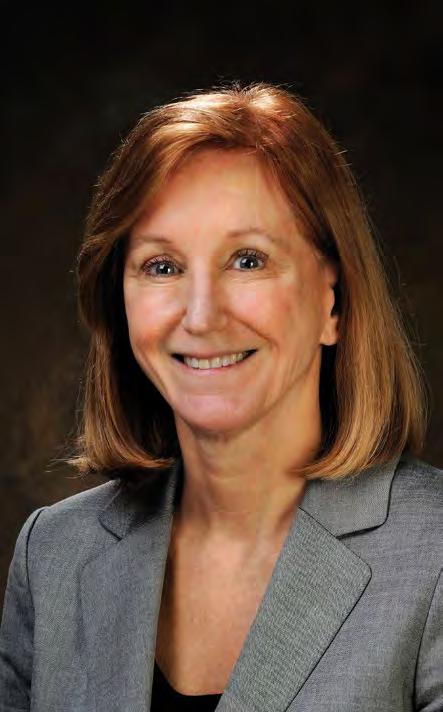

On Walnut Street, we are building the state-of-the-art Vagelos Laboratory for Energy Science and Technology, set to open in 2025. Walk up to Chestnut Street, and you will find the construction of Amy Gutmann Hall—the future home of Penn’s cross-disciplinary initiatives in Data Sciences—and then to Market Street for the vibrant new Tangen Hall, purpose-built to catalyze entrepreneurial innovation. Back on Locust Walk, you can’t miss the multi-year modernization-in-progress of College Hall, the very first building on our campus, completed in 1873 and now on the National Registry of Historic Places.
It is a time of unprecedented new energy at Penn—with a new President, a new Provost, a new Philadelphia mayor, three new deans, new buildings for new academic initiatives, and, as always, the energy of new students and new faculty. Penn’s urban environment is defined by ceaseless change and reinvention, and Penn IUR, approaching its twentieth-anniversary year, is more than ever at the heart of this spirit of revitalization. The Institute’s work, from the outset, has deployed the most significant research and ideas of the present to shape and remake the future.
This annual report demonstrates the wide range of areas in which Penn IUR addresses these urgent challenges of the present and future. This work focuses above all on the best ways to advance urban environments in the face of contemporary challenges such as remote work, climate change, and housing affordability. In recent years, Penn IUR has also emphasized critical issues of environmental sustainability as they affect urban environments, including innovative new solutions related to climate-resilient infrastructure, nature-based solutions, greening vacant lots, responses to flood risk, and sustainable development for global cities.
Penn IUR, as it prepares for its third decade of transformative research, remains essential to a university and city in which students and faculty are always learning new things, making new discoveries, and generating new ideas. In these ways, Penn IUR is especially wellpositioned to exemplify the mission of Penn’s new strategic framework. We congratulate the Institute on a year of great work—and join the Penn community in looking forward to Penn IUR’s essential and ongoing impact on our shared future.
Take a walk around the Penn campus this year, and you will vividly experience the energy of innovation and renovation.
JOHN L. JACKSON, JR. Provost; Richard Perry



We are pleased to report on the ongoing progress toward advancing the transformation of cities.

Our mission to inform sustainable and equitable cities is particularly relevant due to the postCOVID complex economic, social, and environmental challenges facing cities. We sought to accomplish this through an eventful roster of research, publications, convenings, and student opportunities over the past academic year.
In the domestic arena, several exciting projects have taken shape. First, with funding from Analytics at Wharton, we demonstrate how an innovative Pennsylvania Horticultural Society (PHS) program can serve as a model on how to create livable neighborhoods through greening vacant lots in underserved areas. Second, on a national scale, we are developing an index of regulatory restrictiveness to identify areas for the advancement of affordable housing. Third, we are investigating who bears the cost of increasing climate risk. This work on climate and cities is ongoing. Finally, we have initiated a multi-year project on the challenge of affordable housing, convening and reporting on this challenge and local solutions.
Co-Director, Penn Institute for Urban Research; Lawrence C. Nussdorf Professor of Urban Research and Education, Department of City & Regional Planning, Weitzman School of Design
SUSAN M. WACHTER
Co-Director, Penn Institute for Urban Research; Albert Sussman Professor of Real Estate and Professor of Finance, The Wharton School
MARK H. ROSENBERG
Chair, Penn Institute for Urban Research Advisory Board; Principal, MHR Fund Management LLC
ALAN D. SCHNITZER
Vice Chair, Penn Institute for Urban Research Advisory Board; Chair and CEO, The Travelers Companies, Inc.
In the international arena, Penn IUR’s continued exploration of sustainable urban transformation in cities across the globe featured the launch of two interdisciplinary and cross-sectoral projects. First, in collaboration with the United Nations Environmental Programme (UNEP), we produced State of Finance for Nature in Cities: Summary for Local Policymakers and an associated white paper, Assessing Nature-based Solution (NbS) Investments for Urban Resilience. These publications are the first stage of a multi-year effort to outline gaps and opportunities for NbS financing in cities, best practices from around the world, and actions that local governments, financial stakeholders, and private sector and knowledge partners can take to scale up these investments. Second, Penn IUR was honored to partner with Paris Mayor Anne Hidalgo, Rio de Janeiro Mayor Eduardo Paes, and the Sustainable Development Solutions Network (SDSN) President Jeffrey Sachs to create the SDSN Global Commission for Urban SDG Finance, harnessing the insights of finance experts, mayors, practitioners, and scholars to develop an evidence-based portfolio of recommendations for increasing finance for the urban aspects of the UN’s Sustainable Development Goals (SDGs), with a focus on climate.
We are particularly proud of our translational research efforts, including our Special Briefings with the Volcker Alliance on critical issues of state and local financial sustainability and The City in the 21st Century Series with Penn Press. This year, the Special Briefings and a new associated podcast have reached an audience of more than 10,000 state and local leaders and academics. We also celebrated The City in the 21st Century series achieving the milestone of the publication of 50 books.
Penn IUR remains committed to expanding our understanding of how cities shape global sustainability efforts through participation in key international convenings. As part of a robust Penn contingent, Penn IUR participated in the Council of Parties 27 (COP27) in Egypt and joined the United States’ official delegation to the once-every-five-years UN-Habitat Assembly in Nairobi, Kenya where 3,000 delegates from more than 128 countries set UN policy for creating more livable and resilient cities.
Finally, Penn IUR’s leadership programs are thriving. The Lawrence C. Nussdorf Prize for Urban Leadership recognized four important global actors, the undergraduate Urban Fellows program’s 17-member cohort engaged with local leaders at Penn, Washington, D.C., and New York City, and three remarkable students received the Lawrence C. Nussdorf Student Award.
While we have much to celebrate this year, we were also saddened by the loss of Richard Ravitch, who was the inspiration for our Special Briefings series. We end this year’s annual report with a tribute to this exemplary urban leader and our friend.
As we continue to pursue our mission, we are mindful that we could not carry out our efforts without the support of our dedicated Advisory Board, our extraordinary academic and research fellows, and all of our partners. We thank you and look forward to continuing our work together in the year ahead and beyond!




Penn IUR’s research initiatives generate new scholarship and promote the exchange of knowledge among scholars across disciplines.
Cities in the U.S. and across the globe are facing new challenges as remote work has literally changed the urban landscape. Work-from-home technology has undermined downtown economies at the same time as it has raised the cost of housing throughout urban areas. Our applied research aims to expand the understanding of the tectonic changes facing cities and to inform new directions to advance equitable and sustainable cities.
Edited by Penn IUR Co-Director Susan Wachter, and Amy Ellen Schwartz, Dean, Joseph R. Biden, Jr. School of Public Policy & Administration, University of Delaware, and supported by Penn IUR, THIS SPECIAL ISSUE of the Journal of Housing Economics (March 2023) explores the short- and long-term impacts of the COVID-19 pandemic on urban downtowns and regional housing markets, from the U.S. to the U.K. to Norway. The papers demonstrate the impact of remote work in declining demand for office and retail space in downtowns as well as increasing demand and reducing the affordability of housing in global housing markets, particularly in newly accessible markets. Work is ongoing on how cities can respond to these challenges of downtown viability and unaffordable housing.
ANCHOR INSTITUTIONS: UNIVERSITIES AND AFFORDABLE HOUSING
Universities, as urban anchors, are addressing issues of sustainability and equity that extend beyond their physical plants. CASE STUDIES on Duke University, Harvard University, Marquette University, University of Pennsylvania, University of Pittsburgh, University of Southern California, and University of Virginia explored their different approaches, including subsidizing off-campus affordable housing, partnering in joint ventures, and engaging community partners to increase affordable housing.

The policy brief, “AN OVERVIEW OF AFFORDABLE HOUSING IN THE UNITED STATES,” is part of an ongoing Penn IUR research initiative on affordable housing. Authored by Penn IUR Faculty Fellow Lance Freeman, the brief describes the causes of and evaluates potential solutions to the national affordable housing crisis. Freeman points out that much of the affordable housing stock is naturally occurring rather than supported by federally subsidized housing. Nonetheless, these market-provided units are rapidly declining, and federally subsidized units are also exiting from the stock in areas of need, where housing prices are fast appreciating. SEE PAGE 36 for an excerpt of the policy brief.
Penn IUR’s National Land Use Regulatory Index (NLURI) project is a multi-year effort to identify how local zoning restricts the availability of the supply of land for housing. The land use restrictiveness index is based on local-level estimates of the number of housing units allowed per acre under municipal zoning ordinances. The methodology, in beta testing mode, enables the aggregation of census block group data to county, metro, and state levels.

Shared equity models are often referred to as “third-sector” housing strategies, responding to the challenge of affordable housing preservation, and providing households with opportunities to access lower cost housing. These models are particularly critical in underserved communities, where the continued availability of affordable housing is at risk. Shared equity models aim to provide lasting affordable homeownership, with community land trusts (CLTs) representing one of the most common formats. CLTs are nonprofit entities that leverage housing subsidies with long-term retention strategies and resale restrictions to create affordable homeownership opportunities that extend well beyond the typical 15-to-30-year affordability horizon. While CLTs offer a time-tested method for providing durable, affordable housing with ownership rights, their efforts to date have had limited impact. In 2022, approximately 300 CLTs provided 43,000 housing units across the U.S.—this represents notable growth in CLTs, while also remaining well below 1 percent of owner-occupied housing units (approximately 93.5 million units in July 2022). Meanwhile, there is significant growth in city-led support for shared equity solutions that can extend affordable housing subsidies and expand housing choices in the midst of increasingly tight supplies. However, meaningful expansion of CLTs and shared equity models will require both policy shifts and financial investment. The goal of this work is to identify the means to scale up CLT and other shared equity methodologies and models.


Research on greening vacant lots, using data from a longstanding Pennsylvania Horticultural Society (PHS) program in Philadelphia, shows how this program can help to transform neighborhoods. The paper, “THE PRICE EFFECTS OF GREENING VACANT LOTS: HOW NEIGHBORHOOD ATTRIBUTES MATTER” , published in Real Estate Economics, demonstrates how this innovative PHS program can be scaled to create more livable neighborhoods via greening vacant lots in underserved areas at the national level. The paper builds on an existing corpus of literature regarding the positive effects of removing blight by cleaning and greening vacant lots through standardized initial treatment and maintenance in distressed neighborhoods, including substantial work at Penn and in Philadelphia. Importantly, the paper demonstrates that vacant lot greening is not associated with gentrification while quantifying an annual benefit in quality of life of about $10,000 compared to an annualized cost of several hundred dollars for each lot.
Flood risk is expected to increase with climate change and housing development in areas prone to flooding. In a series of papers, Penn IUR is exploring who is likely to bear the cost of this increasing risk. (See “CLIMATE RISK IN MORTGAGE MARKETS: EVIDENCE FROM HURRICANES HARVEY AND IRMA” , and “ADVERSE SELECTION AND CLIMATE RISK” ). Residential lenders could offload risk to government sponsored enterprises (GSE), Fannie Mae and Freddie Mac, but the evidence does not support that this is occurring. Capital markets, through a recently developed financial instrument, credit risk transfers, offered by the GSEs, bear some of this risk. Nonetheless, most of this risk is being borne by insurance, local governments, and homeowners themselves as well as taxpayers. Going forward, efforts to achieve equity and efficiency will require collective action to encourage appropriate adaptation practices and policies. Penn IUR, in a multi-year effort, will continue to inform on these issues.
 Top: Photo by Pennsylvania Horticultural Society.
Top: Photo by Pennsylvania Horticultural Society.
Penn IUR’s research on promising policies and methods to address sustainable development and climate change worldwide links global issues to local solutions. The City ClimateResilient Infrastructure Financing Initiative (C2IFI) continues its research on developing actionable policy and programs with a focus on the Global South. Penn IUR also furthered two ongoing international research collaborations, one with the Guangzhou Institute for Urban Innovation on analyzing urban innovation and another with the Korea Housing and Urban Guarantee Corporation on financing rental housing.
C2IFI has added research on urban nature-based solutions (uNbS) to its work on increasing subnational financial support for sustainable development. C2IFI encompasses a range of scales from the global (e.g., pioneering work to advance new understandings of the amount and impact of uNbS) to the local (e.g., case study analyses of sensitive geographies), engaging scholars and public and private decision-makers.

Penn IUR, in collaboration with the United Nations Environmental Programme (UNEP), developed a definition of urban nature-based solutions (uNbS) and began a preliminary assessment of worldwide expenditures on them. This work contributes to UNEP’s ongoing reports on the state of finance in nature that views NbS as the restoration and management of natural and human ecosystems. The importance of highlighting uNbS adds a new dimension to the field. Traditional studies measure land use—forests and agriculture—but neglect NbS in cities despite their important roles in mitigation and adaptation. Penn IUR’s STATE OF FINANCE FOR NATURE IN CITIES: SUMMARY FOR LOCAL POLICYMAKERS remedies this gap by assembling a preliminary database and illustrative case studies from around the world to raise awareness among local governments, financial stakeholders, and private sector and knowledge partners to recognize and scale up uNbS investments. Penn IUR’s more detailed study, ASSESSING NATURE-BASED SOLUTION INVESTMENTS FOR URBAN RESILIENCE RESEARCH SUPPLEMENT TO STATE OF NATURE FOR CITIES: TIME TO ASSESS , accompanies the UNEP publication.

CITIES THROUGH SUSTAINABLE DEVELOPMENT

In June 2023, Penn IUR launched a partnership with the Sustainable Development Solutions Network (SDSN) to form the SDSN GLOBAL COMMISSION FOR URBAN SDG FINANCE that is analyzing the barriers to urban SDG finance and evaluating existing proposals to improve cities’ access to finance, and developing a portfolio of recommendations to better align the Global Financial Architecture (GFA) with urban needs. Co-chaired by Paris Mayor Anne Hidalgo, Rio de Janeiro Mayor Eduardo Paes, and SDSN President Jeffrey Sachs, the Commission is composed of mayors and leading finance and urban practitioners and scholars. Their work is addressing the city dimensions of multilateral development bank reform, enhanced or new institutions or funds, and de-risking private investment.

New research, EXPLORING HOW THE GALÁPAGOS ISLANDS CAN PROMOTE SUSTAINABILITY AND BUILD RESILIENCE IN RESPONSE TO RISING TOURISM , investigates how the islands can reduce their dependence on fossil fuels, in particular their heavy reliance on imported goods and fuel, while maintaining a strong ecologically sensitive tourist-based economy. The findings cover aviation, shipping, land transport, and energy. The research built on #GALÁPAGOSGOESGREEN: GALÁPAGOS GREEN MOBILITY STRATEGY published last year.
Simon Richter, Professor of German, and Josh Mosley, Professor of Fine Arts, along with a student team (Connie Pan, Ejun Hong, Elon Vedomey, and Gabriel Gonsalves Bertho) used the findings of Exploring How the Galápagos Islands Can Promote Sustainability to create an animated video, WHAT WOULD IT TAKE TO MAKE GALÁPAGOS TOURIST RESILIENT? , to be employed in raising public awareness about the topic.
Penn IUR, in partnership with the Guangzhou Institute for Urban Innovation, completed CIVITAS NOVUS: THE PENN GUANGZHOU/ PENN IUR URBAN ASSESSMENT , an instructional manual for local innovation implementation. It includes detailed descriptions of needed competencies, dissemination strategies, and an extensive bibliography. Supporting this publication is Penn IUR/Guangzhou’s report, PARTNERSHIPS AND INNOVATION FOR ACCELERATING THE IMPLEMENTATION OF THE SDGS IN CITIES , which features best practice case studies from the Guangzhou International Award for Urban Innovation and WRI Ross Center for Sustainable Cities Prize.
Penn IUR, in collaboration with the Wilson Center, U.S. Department of Housing and Urban Development (HUD), and American University, responded to the following question posed by the Korea Housing and Urban Guarantee Corporation (HUG): What interventions would enable young South Korean households to secure rental housing? Penn IUR answered with the study, C AN SOUTH KOREA EMPLOY COVERED BONDS FOR RENTAL HOUSING FOR NEW HOUSEHOLDS? , which evaluated covered bonds, a financial instrument widely employed in Europe, for their potential use for rental housing in South Korea. This paper is included in a larger volume, “Study of Financial Model Development to Increase Long-term Rental Housing Supply,” by Eugénie Birch, Katie Ferguson, Derek Hyra, Amanda Lloyd, Katherine Marinari, Fitz Nicholas, October 2022.
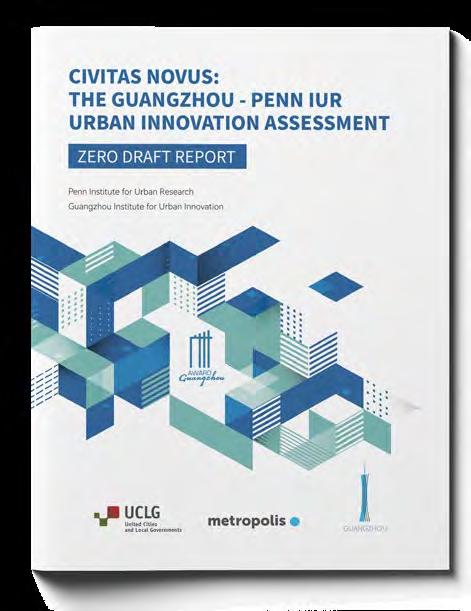
Penn IUR investigated how the Galápagos Islands can reduce
their dependence on fossil fuels, in particular their heavy reliance
on imported goods and fuel, while maintaining a strong ecologically
sensitive tourist-based economy.

Through publications, including Urban Link, the SSRN Urban Research eJournal, The City in the 21st Century series, and a variety of special reports, Penn IUR creates opportunities for knowledge exchange among researchers and practitioners.



Edited by Penn IUR’s Co-Directors, Eugénie Birch and Susan Wachter, Penn Press’s THE CITY IN THE 21ST CENTURY SERIES published four volumes, reaching the milestone of 50 books, this year. Initiated in 2005, the collection includes works on urban architecture, anthropology, economics, history, planning, political science, sociology, and urban design.
The volumes published in 2022–2023 are:
۳ URBAN PLANNING IN A WORLD OF INFORMAL POLITICS (August 2022), by Chandan Deuskar, argues for innovative and practical ways in which urban planners can be more effective in developing countries where many politicians provide urban land and services to the urban poor in exchange for their political support.

۳ CHINA URBANIZING: IMPACTS AND TRANSITIONS (September 2022), edited by Weiping Wu and Qin Gao, details the complexity of China’s urbanization at this time of great change and explores its impact on the country’s economy, environment, urban form and lifestyle, population, and health.

۳ NATION’S METROPOLIS: THE ECONOMY, POLITICS, AND DEVELOPMENT OF THE WASHINGTON REGION (January 2023), by Royce Hanson and Harold Wolman, describes how the national capital region, as a metropolitan political economy and capital city, is different and why this matters for the region’s future.

۳ COMMUNITY BENEFITS: DEVELOPERS, NEGOTIATIONS, AND ACCOUNTABILITY (March 2023), by Jovanna Rosen, explores how residents and community representatives leverage largescale development projects for agreements that promise dedicated local benefits, such as parks and jobs.
SEE PAGES 21–24 for the full list of published books in the City in the 21st Century series.






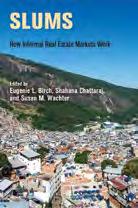





 Roger D. Abrahams with Nick Spitzer, John F. Szwed, and Robert Farris Thompson, 2006
Elijah Anderson, 2009
Sai Balakrishnan, 2019 Eugénie L. Birch and Susan M. Wachter, editors, 2006
Eugénie L. Birch and Susan M. Wachter, editors, 2008
Eugénie L. Birch and Susan M. Wachter, editors, 2011
Eugénie L. Birch, Shahana Chattaraj, and Susan M. Wachter, 2016
Edward J. Blakely, 2011
Peter Hendee Brown, 2008
Peter Hendee Brown, 2015
Jon Calame and Esther Charlesworth, 2011
Naomi Carmon and Susan Fainstein, 2013
Roger D. Abrahams with Nick Spitzer, John F. Szwed, and Robert Farris Thompson, 2006
Elijah Anderson, 2009
Sai Balakrishnan, 2019 Eugénie L. Birch and Susan M. Wachter, editors, 2006
Eugénie L. Birch and Susan M. Wachter, editors, 2008
Eugénie L. Birch and Susan M. Wachter, editors, 2011
Eugénie L. Birch, Shahana Chattaraj, and Susan M. Wachter, 2016
Edward J. Blakely, 2011
Peter Hendee Brown, 2008
Peter Hendee Brown, 2015
Jon Calame and Esther Charlesworth, 2011
Naomi Carmon and Susan Fainstein, 2013




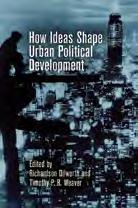





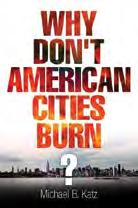
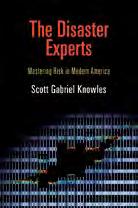



 Ram Cnaan with Stephanie C. Boddie, Charlene C. McGrew, and Jennifer Kang, 2006
Chandan Deuskar, 2022
Margaret Dewar and June Manning Thomas, editors, 2012
Manny Diaz, 2012
Richardson Dilworth and Timothy P. R. Weaver, editors, 2020
Zaire Zenit Dinzey-Flores, 2013
Richard Freeland, 2019
Howard Gillette, Jr., 2022
Royce Hanson and Harold Wolman, 2023
Gregory L. Heller, 2013
Michael B. Katz, 2011 Scott Gabriel Knowles, 2011
Martin Krieger, 2011 Christian Krohn-Hansen, 2012
Jennifer Mack and Michael Herzfeld, editors, 2020
Ram Cnaan with Stephanie C. Boddie, Charlene C. McGrew, and Jennifer Kang, 2006
Chandan Deuskar, 2022
Margaret Dewar and June Manning Thomas, editors, 2012
Manny Diaz, 2012
Richardson Dilworth and Timothy P. R. Weaver, editors, 2020
Zaire Zenit Dinzey-Flores, 2013
Richard Freeland, 2019
Howard Gillette, Jr., 2022
Royce Hanson and Harold Wolman, 2023
Gregory L. Heller, 2013
Michael B. Katz, 2011 Scott Gabriel Knowles, 2011
Martin Krieger, 2011 Christian Krohn-Hansen, 2012
Jennifer Mack and Michael Herzfeld, editors, 2020
▶
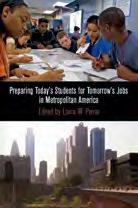






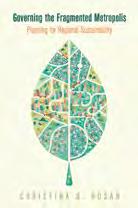

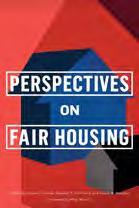

 Marina Peterson, 2010
Marina Peterson and Gary McDonogh, editors, 2011
Vincent J. Reina, Wendell E. Pritchett, and Susan M. Wachter, editors, 2020
Judith Rodin, 2007
Cristina D. Rosan, 2016
Jovanna Rosen, 2023
Brent D. Ryan, 2012 Andres Sevtsuk, 2020
Harriet B. Newburger, Eugénie L. Birch, and Susan M. Wachter, editors, 2011
Michael A. Nutter, 2017
Richard Peiser and Ann Forsyth, editors, 2021
Laura W. Perna, editor, 2012
Marina Peterson, 2010
Marina Peterson and Gary McDonogh, editors, 2011
Vincent J. Reina, Wendell E. Pritchett, and Susan M. Wachter, editors, 2020
Judith Rodin, 2007
Cristina D. Rosan, 2016
Jovanna Rosen, 2023
Brent D. Ryan, 2012 Andres Sevtsuk, 2020
Harriet B. Newburger, Eugénie L. Birch, and Susan M. Wachter, editors, 2011
Michael A. Nutter, 2017
Richard Peiser and Ann Forsyth, editors, 2021
Laura W. Perna, editor, 2012
Initiated in 2005, the City in the 21st Century series
▶ includes works on urban architecture, anthropology,
economics, history, planning, political science,
sociology, and urban design.

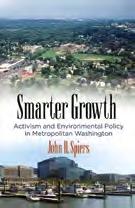




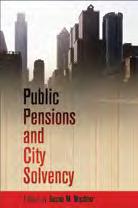


 Mary Corbin Sies, Isabelle Gournay, and Robert Freestone, 2019
John H. Spiers, 2018
John Timoney, 2010
Domenic Vitiello and Thomas Sugrue, editors, 2017
Susan M. Wachter and Marvin M. Smith, editors, 2011
Susan M. Wachter and Kimberly A. Zeuli, editors, 2013
Susan M. Wachter, editor, 2015
Susan M. Wachter and Lei Ding, editors, 2016
Susan M. Wachter and Joseph Tracy, editors, 2016
Mary Corbin Sies, Isabelle Gournay, and Robert Freestone, 2019
John H. Spiers, 2018
John Timoney, 2010
Domenic Vitiello and Thomas Sugrue, editors, 2017
Susan M. Wachter and Marvin M. Smith, editors, 2011
Susan M. Wachter and Kimberly A. Zeuli, editors, 2013
Susan M. Wachter, editor, 2015
Susan M. Wachter and Lei Ding, editors, 2016
Susan M. Wachter and Joseph Tracy, editors, 2016
The Urban Affairs Association, founded in 1969, bestowed its 2023 Best Book in the Field of Urban Affairs Award on Penn IUR Fellow Chandan Deuskar’s Urban Planning in a World of Informal Politic s. The Award Committee citation noted that “the book is both timely and challenging. It addresses how planners and policymakers approach the construction and placement of informal settlements, which is the dominant form of urban growth in the Global South, and the book calls for a significant rethinking of how urban planners view their roles in the development process.” Currently an urban development specialist at The World Bank, Deuskar received his PhD in City & Regional Planning from Penn in 2020 and was a postdoctoral researcher at Penn IUR in 2021–2022.

Urban Planning in a
World of Informal Politics
“addresses how planners
and policymakers approach
the construction and
placement of informal
settlements … and the
book calls for a significant
rethinking of how urban
planners view their roles
in the development process.”
The Special Briefings series, in collaboration with the Volcker Alliance, provides timely commentary on issues facing local and state leaders. Panelists provide insights into current challenges facing cities and states, as well as federal, state, and local government responses. Recordings of past events and summaries of their comments are available on PENN IUR’S WEBSITE . This year, the Special Briefing podcast was launched on all major podcast platforms (more information HERE ). See a complete list of the past year’s monthly Special Briefings on PAGE 52
Penn IUR’s URBAN RESEARCH EJOURNAL , a Social Science Research Network (SSRN) twice-weekly publication edited by Penn IUR Co-Directors Eugénie Birch and Susan Wachter and overseen by an Advisory Board, publishes papers that address the governance, policy, economics, design, and social issues surrounding global urbanization. Since its 2012 inception, its 8,971 papers have been downloaded 1,440,899 times. Among this year’s featured pieces are:
۳ Luís M.A. Bettencourt , University of Chicago; Emily Talen , University of Chicago, “BEYOND THE SINGLE-FAMILY HOME: ZONING, EQUITY, AND ACCESS”
۳ Hiroshi Goto, Chiba University of Commerce; Keiya Minamimura , Kansai Gaidai University, “AGGLOMERATION, FERTILITY, AND LIFE EXPECTANCY”
۳ Raphael Lafrogne-Joussier, CREST-ENSAE; Vincent Rollet , Massachusetts Institute of Technology (MIT), “AMBIENT DENSITY AND URBAN CRIME: EVIDENCE FROM SMARTPHONE DATA”
۳ Sophie Calder-Wang , University of Pennsylvania; Gi Heung Kim , University of Pennsylvania, “COORDINATED VS EFFICIENT PRICES: THE IMPACT OF ALGORITHMIC PRICING ON MULTIFAMILY RENTAL MARKETS”
۳ Julia Fonseca , University of Illinois at Urbana–Champaign; Lu Liu , University of Pennsylvania, “MORTGAGE LOCK-IN, MOBILITY, AND LABOR REALLOCATION”
۳ Siddhartha Biswas , Federal Reserve Bank of Philadelphia; Mallick Hossain , Federal Reserve Bank of Philadelphia; David Zink , Federal Reserve Bank of San Francisco, “CALIFORNIA WILDFIRES, PROPERTY DAMAGE, AND MORTGAGE REPAYMENT”

۳ Elijah Anderson , Sterling Professor of Sociology and African American Studies, Department of Sociology, Yale University
۳ Raphael Bostic , President and CEO, Federal Reserve Bank of Atlanta
۳ Yongheng Deng , Professor, Wisconsin School of Business, University of Wisconsin–Madison
۳ Gilles Duranton , Dean’s Chair in Real Estate Professor and Chair, Department of Real Estate, The Wharton School, University of Pennsylvania
۳ Richard Florida, University Professor and Director of Cities, Martin Prosperity Institute, University of Toronto; Distinguished Fellow, New York University’s Schack Institute of Real Estate; Visiting Fellow, Florida International University; Founder, Creative Class Group
۳ Edward Glaeser, Fred and Eleanor Glimp Professor of Economics, Kennedy School of Government, Harvard University
۳ William Goetzmann, Edwin J. Beinecke Professor of Finance and Management Studies, Yale School of Management
۳ Ira Katznelson , Ruggles Professor of Political Science and History, Columbia University
۳ Kyung-Hwan Kim , Professor, School of Economics, Sogang University; Former President, Korea Research Institute for Human Settlements; Former Vice Minister, Ministry of Land, Infrastructure and Transport (MOLIT), Republic of Korea
۳ Catherine Ross , Harry West Professor of City & Regional Planning; Director, Center for Quality Growth and Regional Development, Georgia Institute of Technology
۳ Bishwapriya Sanyal , Ford International Professor of Urban Development and Planning, Massachusetts Institute of Technology School of Architecture + Planning
۳ Saskia Sassen , Robert S. Lynd Professor of Sociology, Columbia University
۳ Michael H. Schill , President, Northwestern University
۳ Anthony Yeh , Chair Professor, Department of Urban Planning and Design; Director, Geographic Information Systems Research Centre; University of Hong Kong
Urban Link is Penn IUR’s monthly online digest that features commentary on urban topics and highlights Penn IUR news and events. Launched in 2012, Urban Link reaches approximately 10,000 subscribers. Penn IUR’s Faculty Fellows and Scholars author Urban Link ’s articles, allowing Penn IUR to share the groundbreaking scholarship of its associates. This year’s feature stories included:
۳ September 2022
“PENN IUR WELCOMES 2022–23 FELLOWS IN URBAN LEADERSHIP”
۳ October 2022
“WANTED: A NEW PARADIGM FOR UNDERSTANDING NATURE-BASED SOLUTIONS IN CITIES IN THE CLIMATE CHANGE FIGHT”
۳ November 2022
“HOW PHILLY CAN STAY AHEAD OF THE CURVE IN ADDRESSING CLIMATE CHANGE”

۳ January 2023
“EXPERT VOICES: LANDMARK LEGISLATION, NEW OPPORTUNITIES”
۳ February 2023
“ROOTED IN RESEARCH: GREENING CITIES FOR HEALTH, SAFETY, AND WELL-BEING”

۳ March 2023
“CELEBRATING 50 VOLUMES IN PENN IUR–PENN PRESS BOOK SERIES”
۳ April 2023
“PENN IUR ANNOUNCES THE 2023 LAWRENCE C. NUSSDORF URBAN LEADERSHIP PRIZE WINNERS”
۳ May 2023
“NEW IDEAS IN URBAN RESEARCH, URBAN DOCTORAL GRADUATES ’23”
Penn IUR’s briefs and special reports offer in-depth research and analysis on timely urban topics from Penn IUR researchers, faculty fellows, and scholars. In 2022–23, publications included:
۳ Eugénie Birch and Amanda Lloyd “CAN SOUTH KOREA EMPLOY COVERED BONDS FOR RENTAL HOUSING FOR NEW HOUSEHOLDS?”
October 2022
۳ Amanda Lloyd and Nicholas You “CIVITAS NOVUS: THE GUANGZHOU/ PENN IUR URBAN INNOVATION ASSESSMENT”
December 2022
۳ Susan Wachter
“HOW REMOTE WORK IS AFFECTING REAL ESTATE MARKETS”

December 2022
۳ Eugénie Birch, Sam Geldin, Mauricio Rodas, Amanda Lloyd “ASSESSING NATURE-BASED SOLUTION INVESTMENTS FOR URBAN RESILIENCE”
March 2023
۳ Eugénie Birch, Sam Geldin, Mauricio Rodas, Amanda Lloyd “STATE OF FINANCE FOR NATURE IN CITIES 2023: TIME TO ASSESS—SUMMARY FOR LOCAL POLICYMAKERS”
March 2023
۳ David Schleicher
“RESPONDING TO STATE AND LOCAL BUDGET CRISES”
May 2023
۳ Clayton Gilette
“CAN COURTS RESOLVE THE TRILEMMA?”
May 2023
۳ John Landis
“TEN WAYS COVID-19 CHANGED AMERICA’S CITIES—OR MAYBE NOT”
June 2023
۳ Lance Freeman and Yining Lei “AN OVERVIEW OF AFFORDABLE HOUSING IN THE UNITED STATES”
July 2023

Penn IUR disseminates knowledge through a variety of texts: books, briefs, white papers, journal articles, reports, and online publications. Following are excerpts from some of Penn IUR’s work published during 2022–23.

In the aftermath of the pandemic, the transition to work from home (WFH) is disrupting real estate markets across the globe. Surveys project that long-term, 20 percent of full workdays will be supplied from home, compared to 5 percent pre-pandemic. WFH is currently averaging 1.5 full workdays per week, with variation observed by geography, ranging from 0.5 days in South Korea to 1.6 in the U.S., 2.0 in the UK, and by industry. Employer expectations for hybrid employees’ workdays in the U.S., which started to increase in 2021, are stabilizing at about 2.5 days per week, with WFH more prevalent in cities with longer commutes.

Remote work, optimized for productivity, has the potential to reshape urban settlement patterns, slowing or reversing the decades-long trend of increasing urban centralisation and density. For those whose jobs allow, WFH makes it possible to move within and across metros to capture cheaper housing, lower tax rates, and better amenities. Firms can also relocate jobs away from high-rent urban centers to a “hub and spoke” location model, using technology to bring workers together.
The following excerpt is from “How Remote Work is Affecting Real Estate Markets,” a policy brief by Penn IUR Co-Director Susan Wachter, published in the World Financial Review in December 2022.
Cities differ in productivity and amenities and, consequently, in real estate prices. Without WFH technology, a strict trade-off prevails when working in a high-productivity location: either pay the price or endure a long commute. The introduction of WFH allows workers (who can work from home) to relocate their residence from highproductivity to low-productivity cities (or suburbs) while keeping high-productivity jobs. The moves flatten rent-distance functions, (in which historically, rents and prices per square foot peak in the urban center and decline moving outward) by bidding up the prices of cheaper outlying housing prices. Recent data show this is happening. In the U.S., in the immediate aftermath of the pandemic, house prices appreciated rapidly in remote counties, in part because of COVID contagion fears, but also because WFH tech made such moves possible. …
WFH has also decreased the demand for office space, with vacancies up, and rents and values down, with a 28 percent value decline predicted for New York office buildings. Simulations using U.S. metro data indicate that the expected long-term shift to 20 percent of workdays supplied from home is consistent with an average falloff in office rents and values of 8 to 10 percent. A decline in this range is already evident in rents in newly executed office leases and in Real Estate Investment Trust (REIT) pricing. Across and even within markets, the variation in outcomes is substantial. For example, per CoStar, while Manhattan’s Grand Central office submarket exhibits 18 percent vacancy (including sublease space), the submarket’s prime property, One Vanderbilt—a 2020-vintage 1.7 million square foot tower—is only 3 percent vacant (while boasting top-ofmarket rents). Class A office properties are performing well even in high-vacancy markets like San Francisco. Central city office markets in Europe, like London, Milan, Paris, and Amsterdam, are stronger than U.S. peers with lower vacancy, higher year-on-year (YoY) rental growth and lower cap rates, due to the difficulty of developing new supply and the power of existing strong markets with few competing alternatives.
An increase in demand for workspace at home accompanies the declining demand for office space. With supply fixed in the short run, house prices soared 45 percent nominally (and 30 percent on a real basis) in the U.S. from December 2019 at the pandemic’s onset to July 2022, when prices peaked. House prices are now falling due to the rise in mortgage rates and recession fears. While pandemic-induced low-interest rates and fiscal stimulus contributed to the surge, estimates are that one third to one half of the historic house price gains are attributable to a WFH-induced fundamental shift in demand.
These fundamental shifts in demand and price rises were particularly strong in locations with amenities, including easy access to the countryside, to sunny days, but also to downtowns with vibrant street life, and low taxes. Regions and localities must now increasingly compete for footloose employees and firms. …
Pre-pandemic, the “bright lights” of 24/7 cities drew young college graduates, particularly in tech and finance, to urban hubs, with firms following to access that talent. The rise of the knowledge economy spurred the growth of superstar cities, such as London and Tokyo, due to agglomeration economies in production and consumption, that is, the advantages of density. This resulted in concentrations of talent growth in urban hubs with vibrant centers, accompanied by a lack of affordable housing, exemplified by San Francisco. With rises in rents and house prices that locked out the young in these markets, some expressed concerns that tech growth itself could be threatened by the lack of workers who could afford to live in the high-tech-producing regions. Even pre-pandemic, growth in more affordable second-tier cities in the U.S., such as Nashville, began to outpace first-tier metro growth.
A new more dispersed urbanism is likely to boost the trend of second and third-tier urban growth. But the extent this growth is sustainable depends on productivity growth in these cities, which itself depends on the productivity outcomes of the shift to remote work. …
Consumption agglomeration economies offered by dense and vibrant downtowns will still draw talent, limiting centrifugal forces. Global cities, in countries without competitive alternatives will remain strong. Moreover, even with the growth of hybrid work, central cities can draw upon more workers, as the physical extent of their regional (tele)commuting shed widens, flattening but not downshifting rent-distance functions.
Finally, dispersing urban populations across many centers might appear to have the advantage of bringing more affordable locations into play, allowing relief for tech talent to work for highly productive companies while living in affordable and attractive dispersed locations, and solving for affordability more generally. In theory, there could even be a return to a regime of expansive supply of new housing in edge cities which enabled post-World War II (post-WWII) urban growth without house price appreciation in many countries. However, by their very nature, amenity-rich locations are likely to be supply-constrained and fast-growing localities tend to tighten growth controls. While more dispersed urban locations are initially more affordable for out-of-towners it is unlikely that this trend will noticeably increase the supply of housing…The long run global affordable housing supply challenge is likely to persist.
Remote work, optimized for productivity, has the potential to reshape urban settlement patterns, slowing or reversing the decades-long trend of increasing urban centralisation and density.
COVID-19’s January 2020 U.S. arrival led to an immediate and noticeable increase in death rates and a decline in immigration and birth rates. This caused the nation’s annual population growth rate to tumble from 0.8 percent for the 2000–2020 period to just 0.27 percent between 2020 to 2022. All told, the Census Bureau estimates the number of U.S. residents to have grown by just over 1 million between 2020 and 2022, bringing its April 2022 population to 332.5 million.
The following excerpt is from “Ten Ways COVID Changed American Cities— Or Maybe Not,” a Penn IUR policy brief by John Landis, Penn IUR Faculty Fellow, and Crossways Professor Emeritus, Department of City & Regional Planning, Weitzman School of Design, published in June 2023.
In terms of how these new Americans distributed themselves geographically, during the 20 years prior to COVID-19, the Southeast region attracted the largest share of U.S. population growth (32 percent), followed by the Southwest (22 percent) and Pacific regions (19 percent). Lesser growth shares were attracted to the Mid-Atlantic region (8 percent), the Mountain region (7 percent), the Great Plains region (5 percent), the Midwest (4 percent) and the Northeast (2 percent).
Adjusted for changes in composition, the population of U.S. metropolitan areas grew by 22 percent between 2000 and 2020, significantly faster than the nation. The story was quite different for large cities.
Of the nation’s 15 largest cities in 2020, six, led by New York City, which lost 309,000 residents between 2020 and 2022, saw their pandemic era populations decline. Chicago, which had lost 149,000 residents between 2000 and 2020, lost an additional 44,000 between 2020 and 2022. Philadelphia lost 17,000 residents during the latter period. City population losses were concentrated in but not limited to cities in the Midwest and Mid-Atlantic regions. Included on the list of big cities that lost population between 2020 and 2022 were two in the West (Los Angeles and San Jose, which lost 63,000 residents between them) and one in the Southwest (Dallas, which lost 9,000 residents).
COVID-19 significantly diminished the rate of core city population and employment growth. Did COVID-19 hit places that rely on agglomeration effects to fuel their economies harder than others? The answer would seem to be yes. Two years into the COVID pandemic, the top quartile of large urban counties ranked by gross domestic product (GDP) per square mile, a density-based measure of economic productivity, had recovered 96.7 percent of their pre-COVID jobs. Those in the middle GDP-density quartiles had recovered 98.6 percent of their pre-COVID jobs, while those in the bottom quartile—the counties in which economic activity is the most spread out—had recovered 100.4 percent. These differences may not seem large, but at the level of individual places, they were and still are noticeable.
Table 1: Population Change in the 15 Largest U.S. Metro Areas and Cities, 2000–2020 and 2020–2022
Housing, including affordable housing, in the U.S. is produced largely by private actors in a very decentralized system. Private concerns design housing, secure financing from private financial institutions and investors, and ultimately are responsible for marketing, managing, and maintaining housing.
The public sector generally plays a secondary role in the development of housing. At the local and state levels, regulations such as building codes and zoning govern what type of housing and where such housing can be built. The federal government is also sometimes involved in regulating the development and marketing of housing (such as in environmentally sensitive regions or to ensure compliance with fair housing laws) and is the major regulator of financial institutions that finance housing. The production of affordable housing in the U.S. reflects this decentralized, privately-led system.
The overwhelming majority of affordable housing, defined here as (1) housing that is rented or sold at below-market prices, or (2) can be occupied only by households below a defined income threshold, is produced by the private sector. According to the American Housing Survey (AHS) there are 4.8 million households with incomes below 80 percent of their respective area median incomes, who pay less than 30 percent of their income for rent, and who are not in U.S. Department of Housing and Urban Development (HUD) subsidized housing. In contrast, HUD subsidizes 4.5 million households. There are roughly 3.5 million Low-Income Housing Tax Credit (LIHTC) units and perhaps another one-half million units subsidized by state and local governments. Many of the LIHTC, HUD-subsidized, and state and local government subsidized units have multiple subsidies. It is also true that many of the units that are affordable to low-income households but not receiving HUD subsidies likely receive some other type of subsidy.
The following excerpt is from “An Overview of Affordable Housing in the United States,” a Penn IUR policy brief by Lance Freeman, James W. Effron University Professor, Penn Integrates Knowledge (PIK) Professor of City & Regional Planning, Weitzman School of Design, and Sociology, School of Arts & Sciences, University of Pennsylvania, and Yining Lei, PhD student and Presidential Fellow, University of Pennsylvania, published in June 2023.
But it seems likely that more households live in unsubsidized “affordable” housing than any single affordable housing program. Such units are affordable typically because they are older, smaller, substandard in some way, located in an unattractive locale, or some combination of all four. With the private sector overwhelmingly responsible for producing new housing, we can expect that economic principles will govern the basic parameters of housing markets, including demand, supply, and price (i.e., sales prices and rents). Housing prices and the amount of housing available are a function of demand and supply. Increased housing supply, ceteris paribus, is expected to lower prices. Likewise, increased (or decreased) demand will generally increase (or decrease) housing prices. The price/value of a housing unit reflects the bundle of amenities, including locational characteristics that come with that unit. For example, housing units that are larger, have more amenities, or are in more convenient locations will generally be more expensive. External shocks, such as the opening of a transit station that increases the accessibility of the neighborhood, or a large new employer moving into an area, can shift the demand and consequently affect housing prices. External shocks to the supply, such as the development of large numbers of new housing units, can also impact housing prices—in this case, dampening their levels.
Housing is heterogeneous, and therefore there is not one housing market, but several. For example, a luxury housing market, a suburban single-family housing market, and so on. Nevertheless, these housing markets are closely connected, and often serve as substitutes for one another. Changes in one submarket, such as rising prices in highrise Center City Philadelphia, will ripple out to impact adjacent submarkets, such as apartments in University City. The veracity of this simple model of housing supply and prices is increasingly questioned, however, especially in low-income neighborhoods. Instead of seeing new housing as an addition to the supply that will serve to dampen increases in prices, skeptics see new housing as a signal to other developers and landlords to raise rents and develop more luxury housing.
This unconventional view of the impacts of new development, called “supply skepticism,” is often expressed by opponents of new development. The available social science evidence, however, does not support this view. For example, one study found that cities that allowed more condominium development after this type of housing arrangement was legalized did not experience any increase in gentrification.
Another recent study examined how the development of large apartment buildings impacted nearby rental prices in low-income neighborhoods. Contrary to the predictions of the supply skepticism theory, they find that the development of large new buildings lowers nearby rents and is associated with an increase of in-migration of renters from low-income neighborhoods.
A third study “…finds that for every 10 percent increase in the housing stock within a 500-foot buffer, residential rents decrease by 1 percent... across neighborhoods, the negative impact is bigger in gentrifying neighborhoods than established high-income areas.”
Through building codes, zoning, and other land use regulations, state and local governments largely prescribe what type of and where housing is built. The federal government acts primarily as a subsidizer by insuring and regulating the mortgage market for homeownership, and providing subsidies for affordable rental housing. In the remainder of this section, we outline the specific ways affordable housing is produced in the U.S. … Inclusionary Zoning (IZ) uses zoning regulations to incentivize or require developers to include affordable housing in new developments alongside market-rate units. IZ can be mandatory, meaning all developments that meet certain criteria, typically based on the number of units, are subject to the requirement to provide some affordable housing units. IZ can also be voluntary, whereby developers receive a density bonus or some other development-related benefit in exchange for including affordable housing units as part of the development. Under this voluntary incentive-based approach, developers can earn more profits than they otherwise would, and this surfeit of profit has the potential to offset the cost of the affordable units.
For IZ to be effective and produce affordable units, the affordable unit requirements cannot be so onerous to make development unprofitable. Both the number of units required to be set aside as affordable, and the degree of affordability can affect the profitability of and feasibility of IZ to produce affordable units. If the affordability requirements disincentivize new development, IZ could paradoxically reduce the supply of housing that would otherwise exist and contribute to higher housing prices.
Given the tightrope that policymakers must walk to implement an effective IZ program, it’s perhaps not surprising that the evidence on the effectiveness of IZ producing affordable units is mixed. The evidence does suggest that when done correctly, IZ programs do produce affordable housing units. A recent comprehensive study of inclusionary housing in the United States based on a survey of 1,019 inclusionary housing finds at least 110,000 affordable units were produced by IZ programs since the programs’ respective inceptions. This study obtained detailed outcome data for 258 programs. Given that the majority of the IZ programs surveyed did not provide detailed outcome data, the 110,000 figure must be considered a very conservative estimate of the total number of units produced under IZ programs. The majority (71 percent) of the IZ programs surveyed are mandatory. Some 71 percent also provide incentives, most commonly in the form of density bonuses.
Such units are affordable typically because they are older, smaller, substandard in some way, located in an unattractive locale, or some combination of all four.
 BY DAVID SCHLEICHER
BY DAVID SCHLEICHER
Right at this moment, we are at a turning point. State and local budgets have been extremely flush. State budgets recovered very slowly from the Great Recession…but they did recover substantially during the end of the last decade. It looked during the beginning of the COVID crisis that there were going to be huge budget problems, but revenues did not decline the way people expected. The federal government, over the course of 2020 and 2021, provided a huge amount of aid to states, cities, and other local governments. And recently, inflation has helped many state and local budgets as well.
The following excerpt is from a keynote address by David Schleicher, Professor of Law, Yale University, delivered at the Expert Roundtable: Responding to State and Local Budget Crises, hosted by Penn IUR and Wharton Initiative on Financial Policy Regulation on May 26, 2023.
But, as we meet, the situation is changing. Even as employment numbers have stayed high, state revenue is starting to decline. Some governments, like transit agencies with declining take from fare boxes, are starting to look quite wobbly. COVID-era federal aid is due to run out, and indeed the debt limit deal pulls back a little money that was due to be sent to states and cities for a few specific purposes.
Many governments used the flush period well, saving resources for a coming downturn. But others did not, using one-time money like federal aid and volatile tax revenues to cut taxes or create new programs that will be tough to cut in the future. Some of these jurisdictions will face real fiscal pain, even crises. My book, In a Bad State, makes two central points: one analytical and historical, and the other normative and policy-oriented.
The analytical and historical point is that when faced with state or local fiscal crises, federal officials face a “trilemma.” Up until now, the literature on this has focused on two choices the federal government has— bailout or austerity. As scholars like Jonathan Rodden and Robert Inman have argued, the federal government could offer bailouts to state and local governments in crisis, but this would create “moral hazard” or a “soft budget constraint,” an incentive for states and cities to be irresponsible going forward. Doing so creates pressure on the federal government to constrain the powers of states and cities and leads to centralization. In contrast, if it does not offer bailouts, we get austerity. State and local budgets are pro-cyclical—they have more money and can spend more when times are good, but, unless they save in advance, have to cut when times are bad. This is bad macroeconomic policy, though, and thus avoiding bailouts can turn recessions into depressions.
But if you look across the very many fiscal crises in American history, what you see is that bailout often wasn’t an option, as the federal government didn’t have the fiscal capacity to provide bailouts. Instead, the question was whether to encourage states or cities to dig deep and pay their debts, sometimes overcoming their sovereign immunity, or whether instead to encourage states and cities to default on their debt. That is, the question wasn’t bailout, but austerity versus default.
Over the course of American history, there have been many defaults—states defaulted in the 1840s, Southern states defaulted on much of their Reconstruction Era debt, and Arkansas defaulted in the 1930s (Arkansas defaulted all three times, actually, which is why the book jokingly calls it the American Argentina). But why not more? After all, defaulting means that investors, not the federal government and not state taxpayers take the hit, avoiding moral hazard and (as much) austerity.
The answer, the book argues, is that the federal government very much wants states and cities to be able to borrow, and defaults by any jurisdiction harm that ability for all jurisdictions. Congress, as a districted legislature, has never been able to actually produce infrastructure without it falling into a mess of pork-barrel spending, as Barry Weingast and John Ferejohn have shown. But Congress also wants infrastructure built. And states need to borrow to build. So Congress subsidizes borrowing. This happens through the tax code—the interest on municipal debt is exempt from federal taxes, reducing borrowing costs for states and cities. But it also happens by enforcing the terms of municipal bonds and discouraging defaults, making investors more willing to lend. When it does so, it creates nearterm economic harms, as states and cities are forced to bear huge costs to make their debt payments. But it also sets up future investment. For instance, when the Supreme Court developed a series of very aggressive pro-bondholder positions in the 1860s–90s, it meant that local governments had to make severe cuts when they faced crises due to their investments in railroads, creating both worse economic downturns and real social hardship. But the same forces made it possible for cities to borrow to build the infrastructural marvels of the period, like the Brooklyn Bridge or the reversing of the Chicago River.
So when faced with a state or local fiscal crisis, the federal government has three choices, but all of them are bad. It can offer a bailout, which avoids austerity and harm to future investment, but creates moral hazard. It can allow defaults, which avoid moral hazard and austerity, but harm the bond market. Or it can force austerity, which avoids moral hazard and harm to the bond market, but creates macroeconomic problems and reduces services just when people need them most.
But if you look across the very many fiscal crises in American history, what you see is that bailout often wasn’t an option, as the federal government didn’t have the fiscal capacity to provide bailouts. Instead, the question was whether to encourage states or cities to dig deep and pay their debts, sometimes overcoming their sovereign immunity, or whether instead to encourage states and cities to default on their debt.
 BY AMANDA LLOYD AND NICHOLAS YOU
BY AMANDA LLOYD AND NICHOLAS YOU
The Guangzhou/Penn IUR urban innovation framework is an integrated approach to urban innovation that addresses the complexity and scale of urban systems. Globally, cities have a wide array of powers, responsibilities, and mandates. They must be responsive to a mix of community, national, corporate, and global demands while providing infrastructure and services like potable water, transport, housing, health, and education. Most municipalities are running at full speed just to stay in place. The process of innovation must thread a needle between shifting political priorities or emergencies on one hand and bureaucratic or cultural status quo on the other. Unlike for corporations, urban innovation is not just about seeking competitive advantage. It is also about leaving no one and no place behind. Urban innovation aims for “shared ideas implemented to better the experience, management, and organization of urban life, looking towards the future and serving as a lesson and inspiration elsewhere.”
The following excerpt is from the report, Civitas Novus: The Guangzhou/ Penn IUR Urban Innovation Assessment, by Amanda Lloyd, Program Director, Global Research Initiatives, Penn IUR, and Nicholas You, Executive Director, Guangzhou Institute for Urban Research, published in November 2022.
We have created a framework that combines the unique characteristics of urban systems with a learning approach (competencies), an integrated holistic process (ecosystem services), an entrepreneurial viewpoint (the innovation process), and the removal of traditional efficiency silos for more collaborative environments (open systems). These four principles form the foundation of our framework.
Defining urban innovation as a set of competencies offers individuals and organizations a greater sense of agency and control by emphasizing learning and growth. A common response to innovation is “we don’ t have capacity or resources for this!”
We recognize that a call to change how cities are planned, managed, and governed while dealing with global health, climate, and economic crises can overwhelm even the most seasoned professionals. Defining urban innovation as a learning process is a subtle but important message that encourages continued learning, creative problemsolving, and leadership at all levels versus the assumption that innovation requires an infusion of new talents and new resources.
by cultural practices, physical systems, and governance models, and offers direct and indirect benefits that must be explored but can be hard to measure in classic economic or public policy models.
3. Innovation Processes.
Urban innovation is a process that cities can promote and integrate to create “shared ideas implemented to better the experience, management, and organization of urban life, looking towards the future and serving as a lesson and inspiration elsewhere.”
Our research, including an analysis of hundreds of “best practices” from the Guangzhou International Award for Urban Innovation, shows that the gap between testing ideas and scaling up ideas into systemic change is large and endemic. Without a systemic adoption of innovation principles and processes, great ideas and even good projects remain ad hoc and rarely result in lasting changes to policies and procedures. Stakeholders must understand how many systems are shifting simultaneously and compounding the rate of change to meet goals like Net Zero cities and regions. Every sector that impacts urban life is adopting new missions, revisiting old models, and changing the rules. Cities must learn to meet those changes head-on by learning how to mainstream innovation as a fundamental urban process that values impact and outcomes, not only efficiencies and outputs. Urban innovation needs to look beyond return-on-invest to return-on-impact.
4. Open Systems.
Embedding competencies within the ‘ecosystem’ concept ties urban innovation into integrated systems approaches that emphasizes information flow, feedback loops, and an iterative approach to thinking and doing. Ecosystem approaches have steadily transformed how people think about our impact on the planet, the complexity of life, and the interdependency of systems, including cities and the environment. By borrowing and adapting this framework, urban innovation can be thought of as a system of systems that supports a range of socio-economic goals and urban goods and services. Like a natural ecosystem, an urban innovation ecosystem has supporting components and services, information flows and feedback loops. Conceptually, an ecosystem emphasizes that it enables and is shaped
A city needs to be an ‘open system’ organization with a free flow of information and knowledge, including innovative ideas, in order to become more ‘holistic,’ ‘circular,’ and ‘collaborative.’ Innovation is broadly perceived as a facet of business and science that rewards competitive advantage and proprietary information (patents). This form of innovation doesn’t provide cities the capacity or acceleration they need to transition to new business models, policy frameworks and administrative cultures. Cities need to use the power of knowledge networks, as demonstrated (for better and worse) by the digital revolution, to transform themselves. Cities cannot afford to have a good idea go to waste. We find that when project-based innovation is limited in scope, pace and time, they are not often reviewed systematically ex post facto. Insights stay within the project team or organization. Strategic opportunities to suggest permanent changes to models, practices or policies are not discussed. Lessons that apply to other parts of the ecosystem are also missed. To be most effective, a multi-disciplinary learning network at the local scale is necessary to speed up the power of innovation. An example of a shift towards innovation and open systems is the Council of Europe’ s 12 principles of good governance. Efficiency and effectiveness are combined into one principle (#3) while Principle 8, Innovation and Openness to Change, advocates for a “readiness to pilot and experiment new programmes and to learn from the experience of others.”
HOLISTIC (Ecosystem Services) LEARNING (Competencies Approach) INTEGRATIVE (Open Systems) ENTREPRENEURIAL (Innovation Processes)Experts and practitioners believe that urban characteristics of Nature-based Solutions (NbS) are unique and set them apart from conventional NbS approaches and investment strategies, justifying the importance of conceptualising new ways of tracking and evaluating needs of urban areas. Urban NbS projects incorporate elements of the large categories of biodiversity, ecosystems, agriculture, and land use considered in national assessments. However, in their conception and implementation, city scaled nature-based investments are nested and integrated into cross-sector efforts to support such co-benefits in the urban built environment as infrastructure services and urban resilience.
The UN’s operational definition of NbS delineates its urban elements. Broadly, urban NbS and investment in nature encompass the “principle of bringing nature into cities for the multiple benefits that it can deliver.”
In 2021, UNEP co-developed with the G20 Italian Presidency a report on how NbS can be harnessed for cities. This G20 report, entitled Smart Sustainable and Resilient Cities: The Power of Nature Based Solutions, has three robust annexes: Annex I on multi-level governance; Annex II on financing NbS; and Annex III on natural capital accounting. Annex II, entitled “Financing Nature-Based Solutions for Smart, Sustainable, and Resilient Cities” (UNEP 2021) is most relevant to the SFN 2022. It summarises various documents on financing NbS in cities and focuses on large urban parks, street trees, river restoration, sustainable urban drainage systems, green roofs, and community gardens as key examples of NbS that have been popular around the world. It also provides detailed case studies to showcase examples.
Urban NbS approaches are commonly understood and measured in two ways. Each approach affects investment and financing models as well as stakeholder buy-in. The first approach is to categorise them in a system-based action typology. The second approach categorises interventions by goals and the relative costs and benefits of investments. This holistic approach combines project financials that look at external societal and ecosystem co-benefits. See Tables 1 and 2.
Within these two approaches, efforts to inventory and evaluate urban nature-based solutions are emerging, especially in the biodiversity community. For example, Singapore developed the Singapore Index on Cities’ Biodiversity (SI) in 2008, updated 2021, to assist public and private sector decision-makers in formulating, financing, and monitoring programs that not only promote biodiversity (e.g., native bird species) but also provide quantifiable sustainable development benefits (e.g., recreational services). Meanwhile, the European Union supported a four-year project, Naturvation, that assessed more than a thousand projects in cities across Europe.
Natural capital accounting (NCA) is another approach employed at national and regional scales to assess the value of NbS. It is an area of growing interest for cities. Researchers originally conceived NCA to incorporate the value of natural assets in national accounts and reflect monetization of cobenefits such as amenities and health. They have now crafted urban natural capital accounts for several cities, including London, Belfast, Birmingham, Toronto, Vancouver, Philadelphia, and New York. NCA can reframe cities’ approaches towards investing in the environment by demonstrating the value of urban natural assets and allowing the quantification of the benefits of biodiversity and nature. NCA, though still in its early days for cities, has the potential to become a useful tool to build business cases for NbS projects in urban areas.
The following excerpt is from State of Finance for Nature in Cities: Time to Assess, undertaken at the invitation of the United Nations Environmental Program (UNEP) as a supplement to State of Finance of Nature 2022 (SFN 2022), published in March 2023. The authors are: Penn IUR Co-Director, Eugénie Birch; Mauricio Rodas, Former Mayor, City of Quito; Visiting Scholar, Penn IUR, Perry World House, and Kleinman Center for Energy Policy; Senior Fellow, Adrienne ArshtRockefeller Foundation Resilience Center; Samuel Geldin, Postdoctoral Researcher, Penn IUR; and Amanda Lloyd, Program Director, Global Research Initiatives, Penn IUR.
SYSTEM-LEVEL ACTION DEFINITION
Urban Forests Locating forests within cities or at the urban–rural interface
Parks and Green Spaces Providing unpaved, biologically active spaces
Urban Agriculture Growing plants or animals in and around cities, also local processing and delivering food
Streets Supporting linear natural infrastructure with strips of trees, plants and vegetation at various scales, planting street trees, and establishing green corridors
Buildings Building green roofs and walls, capturing and recycling stormwater, improving air quality, controlling for extreme temperatures, promoting albedo roof treatment
Water Management Constructing green storm water (e.g., landslide prevention/slope remediation, bioretention areas, bioswales, impermeable surfaces) and drinking water (e.g., watershed conservation and restoration) infrastructure
Riverine Restoration Improving and/or greenlighting rivers and protecting wetlands, floodplains, embankments, and natural culverts, removing trash
Coastal Protection Restoring or preserving mangroves, salt marshes, dunes and beaches and conserving and restoring reefs, removing trash
Source: Adapted by the authors from Smart, Sustainable and Resilient Cities: The Power of NbS (UNEP 2021)
CATEGORY DEFINITION
Well-being Mental and physical health
Ecosystem Services Provisioning, regulating, supporting cultural services
Resilience Hazard protection
NET BENEFITS EXAMPLES
Increased productivity
Payment mechanisms for key services; avoided costs of water purification; reduced air conditioning costs; effective supply chains
Avoided damages, healthcare costs, lower insurance rates
Biodiversity Abundance of plants and animals Biomedical resources; pollination/food production, air/water quality, disease prevention
Source: Authors
While the conceptual foundations of urban NbS have already been established in other reports, data collection—both in terms of methods to collect data, and in the quantity of data available—is at a nascent stage. Current global climate models depend primarily on data used to estimate various categories of land-use. Classification of land-use in forests, agriculture, coastlines, and riverine valleys allow for the modelling (and simulation of outcomes associated with various climate change pathways) of environmental degradation and biodiversity loss.
Urban activities tend to be overlooked in such data models since cities cover less than 3 percent of global land cover, and therefore present modelling and simulation challenges as they do not fit the norm. They neither account for urban activities nor consider cities due to their low land coverage—2–3 percent of the global total. Efforts to incorporate urban investments in SNF 2022 found that an accurate accounting of NbS in cities in the global narrative of NbS investments was impossible because urban NbS investments are either currently integrated into national or subnational budgets,
PREVENTED COSTS EXAMPLES
Avoided healthcare costs
Economic losses due to drought, heat; investment cost (e.g., desalinization)
Large public expenditures, fiscal sustainability, relative cost/person or cost/economic output of investment versus other interventions
Loss of resources for pharmaceutical use, lower food production, lower air and water quality
folded into larger loans incorporating grey and green infrastructure, and/or not disaggregated in global investment databases.
As things stand, most of the funding information for NbS comes from public sector sources; data on private sector investment in urban NbS are extremely limited despite the need to report them for designing viable business projects, estimating impact or ESG investments, and delivering effective philanthropy. Except for urban watershed ecosystem services, funders, donors, and city budget officials generally do not track urban NbS investment data as separate accounting categories. Recently, multilateral development banks, donors, and specialised NGOs have begun to measure the occurrence and potential of NbS in urban projects for resilience while also recognising the importance of an approach adhering to a guiding/ normative principle that holds “green when possible, grey when needed.” The scant extant data—on public, philanthropic, and private sector investments flowing to urban NbS projects can provide the foundation for a more robust accounting of urban NbS in the future.
 BY MAURICIO RODAS AND EUGÉNIE BIRCH
BY MAURICIO RODAS AND EUGÉNIE BIRCH
Philadelphia is a bit ahead of the curve in addressing the problem of climate change.
In 2019, the city’s Office of Sustainability launched the nation’s first and only city heat response plan, Beat the Heat, crafted through a planning process that reflected community voices. The plan includes a heat response checklist, ideas for cooling centers, and a design for a heat resilient neighborhood—all available for wide replication.
The following excerpt is from an op-ed by Mauricio Rodas, Former Mayor, City of Quito; Visiting Scholar, Penn IUR, Perry World House, and Kleinman Center for Energy Policy; Senior Fellow, Adrienne ArshtRockefeller Foundation Resilience Center, and Penn IUR Co-Director, Eugénie Birch, published in the Philadelphia Inquirer on November 18, 2022.
It is likely because of that plan and steps that had been implemented earlier—including the Hot Weather–Health Watch/Warning System that was put in place in 1995—that the city’s heat-related deaths were five times lower during the 2010s than they had been during the 1990s.
In addition, this past summer Philadelphia was one of 16 U.S. cities to lead an Urban Heat Island Mapping Campaign, through a partnership between the National Oceanic and Atmospheric Administration and the Academy of Natural Sciences of Drexel University, to uncover the uneven distribution of extreme heat across the city’s neighborhoods.
Residents in Fairhill, Grays Ferry, and South Philadelphia have been engaged in public awareness campaigns, such as the innovative two-year neighborhood arts project Heat Response PHL, sponsored by the Trust for Public Land and the Pew Center for Arts and Heritage. The program underscored how extreme heat disproportionately affects low-income communities, and resulted in refurbished parks, children’s art projects, and a public awareness demonstration at the 2021 Philadelphia Flower Show.
But Philadelphians—and everyone in the United States—should be taking more sustained, widespread action to avert, minimize, and address the effects of heat waves. A so-called silent killer, heat stress typically causes more deaths in a year than natural disasters, especially among older Americans, toddlers, pregnant women, people who regularly work outside, and those with chronic diseases.
The nation’s annual economic cost of lost labor productivity because of extreme heat is estimated at $100 billion. Heat can also damage and strain infrastructure, affect the delivery of public services, and reduce educational attainment. Evidence also exists of a direct correlation between violent crime and high temperatures.
There are numerous responses to extreme heat that Philadelphians can adopt, whether passively in reaction to heat waves, or proactively crafting and implementing heat-resilient designs writ large. These ideas come from a range of people and places: physicians at the Centers for Disease Control and Prevention, architects, landscape architects, city planners, real estate developers, industrialists, scientists, engineers, and grassroots housing advocates working in informal settlements.
So what more could Philadelphia do? The mayor could appoint a chief heat officer as have Miami–Dade, Phoenix, Los Angeles, Athens, Melbourne and Santiago de Chile, to raise awareness and integrate short- and long-term heat responses among city agencies.
Philadelphia could emulate Sevilla, Spain, and adopt a heat-wave naming protocol. (We name hurricanes, why not heat waves?)
Philadelphia public and private decisionmakers could join the Heat Action Platform to share knowledge on policy tools, financing mechanisms, and best practices for mitigating and adapting to extreme heat.
Philadelphia’s universities, philanthropic groups, and financial institutions could support heat-responsive projects. One can imagine a collaboration with the Pennsylvania Horticultural Society to scale up its greening activities.
These are just a few ideas, and surely Philadelphians have more. While thinking about heat waves as winter approaches might seem odd, the clock is ticking. Last summer’s record-breaking heat serves as a strong warning. It is time to reclaim and reinvent William Penn’s “greene Country Towne which will never be burnt, and always be wholesome” for the 21st century.
A so-called silent killer, heat stress typically causes more deaths in a year than natural disasters, especially among older Americans, toddlers, pregnant women, people who regularly work outside, and those with chronic diseases.
The residents of Accra, Ghana, were used to their city flooding every rainy season, but June 2015 was worse than normal. Heavy rainfall caused floods in the streets several feet deep. The city’s marketplaces, normally crowded and lively, came to a standstill as stormwater destroyed the goods of traders. Traffic froze as people climbed on top of cars to escape the water coursing through the streets. Twenty-five people died in the floods. Countless others only barely escaped being swept away.
Just when things seemed like they couldn’t get any worse, another disaster struck. Near Kwame Nkrumah Circle, the city’s busiest interchange, petrol from a fuel station mixed with the floodwater and flowed to a nearby house. A cooking flame ignited the mixture, causing a massive explosion and fire. Firefighters struggled to get through the floods to put out the fire. By the time they finally managed to extinguish the fire, it had killed two hundred more people. Ghana’s president called for three days of national mourning for the victims of what came to be known as the “twin disaster” of flood and fire.
City leaders knew that they had to do something to quell public anger over the tragedy. They turned their attention to the informal settlement that straddled Korle Lagoon. Officially named Old Fadama, the settlement was widely referred to as “Sodom and Gomorrah,” after the biblical cities that God destroyed as punishment for their sinfulness. Surely the flooding was caused by structures in Old Fadama obstructing the city’s drainage, city officials reasoned. Twenty years previously, the government itself had used the site to resettle people fleeing a conflict in the north of the country, and the settlement had grown over time. But these origins were now either forgotten or ignored. As far as city officials were concerned, the residents of the settlement were squatters and had no legal right to be there. The mayor quickly ordered the demolition of structures along the waterway. Bulldozers soon rolled into the settlement and destroyed the homes of thirty thousand people. …
The following excerpt is from Urban Planning in a World of Informal Politics, by
Chandan Deuskar.Published in August 2022 as part of The City in the 21st Century Series, and winner of the Urban Affairs Association’s 2023 Best Book in Urban Affairs Award, the book details the failure of western style urban planning in the Global South and outlines its improvement through a contextual approach.
Copyright University of Pennsylvania Press 2022. Excerpted with permission of the University of Pennsylvania Press.
Residents of Old Fadama rioted in protest of the demolitions. National political leaders from the incumbent party watched footage of the angry protesters on the news and grew nervous. They summoned the mayor to Parliament. He arrived, bringing the city’s director of planning with him. The planning director justified the demolitions by explaining that the area was officially intended as the site of recreational facilities, not residences. As proof, he unfolded a fading copy of a 1970 plan for the Korle Lagoon area. Sure enough, the plan depicted a stadium, a yacht club, tennis courts, a cricket ground, an aviary, and botanical gardens laid out picturesquely where the makeshift structures of Old Fadama now crowded together.
The party leaders were unmoved by the plan. They reminded the mayor that the residents of Old Fadama were supporters of their party. The settlement’s poverty and precariousness meant that the party had been able to capture its votes with relatively inexpensive handouts. But voters were fickle, and election results in Accra had been getting uncomfortably close. The party could not afford to antagonize the residents of Old Fadama. The mayor, who was appointed to his role by the party, had no choice but to stop the demolitions. The residents of the demolished structures soon returned and rebuilt their homes along the waterway. Despite this reprieve, their legal status did not change.
The growth of informal settlements (“slums”) like Old Fadama is not simply the result of poverty, rapid rural-to-urban migration, or a lack of technical capacity of governments to make or enforce plans. Informal settlements in lowand middle-income democracies grow and persist because people in positions of political power have an incentive to cultivate the vulnerability and dependency of communities who must provide political support to them in exchange for their survival.
Urban planners are failing to provide adequate shelter, secure land and property rights, and safe and healthy living environments for vast numbers of people in rapidly urbanizing parts of the world. Over a billion people worldwide live in what the United Nations defines as “slums,” and this number continues to grow by millions each year. The world’s urban population is expected to have nearly doubled between 2015 and 2050.With 90% of new urban growth occurring in low- and middleincome countries, the number of people living in informal settlements is likely to continue to rise dramatically in coming decades. …
Informality is not a problem as much as it is a poor solution to a problem. The problem is the inability or unwillingness of the formal public or private sectors to provide sections of the population with access to shelter, services, and livelihoods. Informality is a partial solution to this problem to the extent that the poor are able to use informal practices to secure these necessities. However, it is a poor solution because of the challenges that come with it.
Although urban informality may appear un-planned, haphazard, and chaotic, an underlying order does exist, governed by complex but wellestablished social and political relationships. Informality has emerged for many reasons: urban populations are growing rapidly, the formal sector lacks jobs, housing markets are exclusionary, and states lack capacity. However, in developing democracies around the world, informality persists because powerful actors—politicians, government officials, business leaders, and others—have learned to benefit financially and politically from it. This gives them disincentives to effect change. These disincentives, which include corruption and clientelism, undermine formal planning efforts. They are arguably more responsible for the limited impact of planning than the lack of technical training, funding, technology, public participation, or “political will.”
Clientelism undermines formal urban planning in various ways. It can encourage informal urban growth, as politicians supply land and services for informal settlements or protect informal settlements from removal after they have formed, in exchange for political support from the residents of these settlements. This creates an alternate, informal channel by which political leaders supply the poor with urban land and services. The need to maintain this alternate channel disincentivizes both political leaders and the urban poor from supporting broad-based, formal planning efforts. Planning agencies, therefore, lack the political support needed to implement plans, build financial and technical capacity, and involve the public in planning. Politicians manipulate planning decisions, allocating urban resources in accordance with their electoral calculations rather than broader, long-term public need.
The example of Old Fadama in Accra illustrates these dynamics. Its residents are politically important enough to escape permanent removal and receive some services through clientelism. Arguably, the political importance of Old Fadama is not in spite of but because of its informal status. The vulnerability of the residents’ situation makes them rely on reprieves and hand-outs, which political leaders can use to manipulate their loyalties. While politicians may have an incentive to help the residents occasionally, they also have no incentive to help the residents enough for them to no longer need help. Meanwhile, formal plans, no matter how potentially beneficial to the city they may be, remain unimplemented. Politicians have no interest in empowering a planning department that could potentially undermine their ability to benefit politically. Old Fadama’s residents alone cannot be blamed for the tragic consequences of the flood and fire in Accra in 2015. What can be blamed is an environment in which political leaders have no incentive to support the kind of urban planning that might allow a city to grow in a way that is, among other things, resilient to such disasters. Versions of these dynamics are playing out across the cities of the Global South.
Informal settlements in low-and middle-income democracies grow and persist because people in positions of political power have an incentive to cultivate the vulnerability and dependency of communities who must provide political support to them in exchange for their survival.
The first and most important characteristic of Beijing’s urban village demolition in 2017 is that it was a state-planned, systematic, and top-down process. Prior to the Daxing fire, most actions along these lines were individualized rather than citywide or systematic, and focused on residences and migrant schools. Under a market-driven logic, such demolitions took place in scattered localities where officials and commercial developers saw the potential of generating material interests. However, in 2017, the demolition became more systematic and campaign-like, incorporating all areas on Beijing’s urban fringe. The decision-making process was clearly top-down— from the municipal government to the communities—with the Beijing government setting the general agenda and the district-level bureaus making detailed plans. There was minimal bottom-up negotiation, unlike what was seen in previous demolitions.
The second characteristic of the demolition is the force and speed with which it occurred. In the past, demolitions benefited local cadres while the central government played a regulative role in setting constraints and compensating migrants and homeowners. On the contrary, the central and local government shared the same goal of evicting migrants out from large cities in 2017. With the upper-level government being supportive of population control and migrant eviction, local agents were encouraged to take more aggressive action. The central government stressed the importance of redeveloping shantytowns and created incentives for the Beijing government to push forward the demolition more fiercely. The message of being tough and aggressive was delivered through the hierarchical system of parties and executive branches. Individuals were forcibly removed from their residences, their property dumped onto sidewalks or the street. Numerous photographs document notices indicating that evictions were mandatory by 22 November, the Wednesday following the Friday night fire. The eviction team pushed thousands of migrants onto the streets, cutting off electrical or heating supplies and urging people to pack within forty-eight hours. In some villages, the police broke into people’s homes, smashing windows and doors if the residents refused to leave.
Last but not least, the demolition targeted noneconomic goals rather than the maximization of investments and local GDP growth. The official narrative for why the fire led to the demolition wave focused on safety. Officials from the Beijing Emergency Management Bureau claimed that the demolitions were undertaken to eliminate the source of the accidental fire and to protect the personal safety of migrants. …
The following excerpt is from China Urbanizing: Impacts and Transitions, edited by Weiping Wu and Qin Gao and published in September 2022 as part of The City in the 21st Century Series. The excerpt’s authors are Shiqi Ma, PhD Candidate, Cornell University, and Jeremy Wallace, Associate Professor, Department of Government, Cornell University. Ma and Wallace explore how under Xi, the national government has moved from being a regulator to an enabler in local land use decisions. In so doing, it is pursuing large scale demolitions of urban villages within the country’s leading cities to promote modernization. Copyright University of Pennsylvania Press 2022. Excerpted with permission of the University of Pennsylvania Press.
Taking advantage of the newest technologies, we can use alternative tools to gather more information about Chinese cities. One of the most useful of these resources is satellite imagery. The advancement of high-resolution, high-frequency satellite images makes it possible for researchers to identify the location of urban villages and trace the changes in their spatial and temporal patterns. We see the potential of combining di fferent evidence, conducting data analysis, and discovering new theories with the adoption of satellite imagery.

While conventional sources of information provide many valuable insights into the understanding of Chinese cities, researchers have been concerned about their limitations. Previous literature uses official documents, state generated data, and on-site interviews and surveys to study the demolition of urban villages in China. However, the accessibility and reliability of these sources vary depending on the political circumstances. …
For these reasons, many researchers conduct on-site interviews and surveys to study urban villages in China. While fieldwork improves the reliability of empirical evidence and provides ground truth validity, it has several limitations. If the party–state continues to intensify censorship and information controls, more restrictions on field research seem likely. Moreover, fieldwork cannot solve the challenges of small-N problems and limited scopes of analyses. Due to the time and budget constraints, most fieldwork covers only a few regional cases. Interviews and surveys have difficulty tracing historical circumstances that no longer exist. Comparative historical studies require immense financial and time investment in long-term projects.
With the help of high-resolution satellite images and digitized street views, we are able to gather alternative information about Chinese urban villages. Free satellite imagery resources like Planet and Google Maps provide their users with accurate and updated depictions

of the areas under observation. Google Maps updates its satellite imagery on a roughly monthly basis, while Planet, an independent satellite operator and data analysis firm, has daily imagery at a lower resolution. The street view of Baidu Maps covers most of the areas in large cities so that users can observe the details of each street and its buildings.
The combination of satellite and street-level imagery helps researchers identify the spatial locations of urban villages and observe their patterns. …
To improve the robustness of the findings, we recommend that researchers combine conventional sources with satellite imagery and cross-validate various types of empirical evidence. If consistent, observations from satellite imagery can provide concrete examples to compensate for the limitations of conventional sources of information. When satellite imagery goes against other forms of evidence, researchers have an opportunity to reexamine the reliability of data and explore the gap between official statements and actual implementations.
We also see the potential of building new theories based on satellite imagery. Since satellite images offer a new perspective compared with conventional sources, we expect that they can bring to light new patterns and theories to explain them. Using automated imagereading techniques, one could construct a large-scale data set of Chinese urban villages across time and place. Scholars have used remote sensing data to automatically identify the slums in South Asia and Latin America. And Planet has launched an AI-based project that detects the changes in buildings and roads automatically on a global scale. A big data set of Chinese urban villages will create more opportunities for future research.
Xinjiancun (a) before demolition (October 2017); (b) after demolition (May 2018).When satellite imagery goes against other forms of evidence, researchers have an opportunity to reexamine the reliability of data and explore the gap between official statements and actual implementations.

In 2022–23, Penn IUR sponsored 38 events, including the monthly Special Briefing series, Penn IUR’s ongoing Public Interest series, expert roundtables, and Penn IUR Book Talks.


All recorded public events are archived on the Penn IUR WEBSITE

How should cities recover from the fiscal challenges brought by the COVID-19 pandemic? To answer this question, Penn IUR and the Volcker Alliance launched Special Briefing , a monthly panel discussion and podcast where local and state officials and experts discuss topics that are critical to the future of American cities, moderated by Penn IUR Co-Director, Susan Wachter, and William Glasgall, Volcker Alliance Senior Director, Public Finance and Penn IUR Fellow.
July 21, 2022
SPEAKERS:
Nicholas Bloom , Stanford University
Stijn Van Nieuwerburgh , Columbia University
Andrew Rein, Citizens Budget Commission
Lauren Weber, The Wall Street Journal
September 15, 2022
SPEAKERS:
Alison Premo Black , American Road & Transportation Builders Association
Mary Beth Ann Bovino, S&P Global Ratings
Hughey Newsome, Wayne County, Michigan
Gabriel Petek , State of California
Mark Zandi , Moody’s Analytics
October 20, 2022
SPEAKERS:
Ben Beachy, BlueGreen Alliance
Sarah Gimont , National Association of Counties
Justin Marlowe, University of Chicago
Harris School of Public Policy
Richard Prisinzano, University of Pennsylvania
November 17, 2022
SPEAKERS:
Shirley Clarke Franklin , City of Atlanta
Greg David , City University of New York
Heather Gillers , The Wall Street Journal
Farhad Omeyr, National League of Cities
December 15, 2022
SPEAKERS:
Mayor Kate Gallego, City of Phoenix
Emily Brock , Government Finance Officers Association
Natalie Cohen, National Municipal Research
Julia Coronado, University of Texas at Austin
Mark Zandi , Moody’s Analytics
January 19, 2023
SPEAKERS:
Steven J. Davis , University of Chicago
Tracy Hadden Loh , The Brookings Institution
Stijn Van Nieuwerburgh , Columbia University
Romy Varghese, Bloomberg News
February 16, 2023
SPEAKERS:
Shelby Kerns , National Association for State Budget Officers (NASBO)
Eric Kim , Fitch Ratings
Gabriel Petek , State of California
Lauren Larson , State of Colorado
March 30, 2023
SPEAKERS:
Amy Cotter, Lincoln Institute of Land Policy
Heather Long , The Washington Post
Stijn Van Nieuwerburgh , Columbia University
Maria Torres-Springer, City of New York
April 27, 2023
SPEAKERS:
Alex Adams , State of Idaho
Steve Adler, City of Austin, Texas
Matthew D. Chase, National Association of Counties
Darryl Martin , Dallas County, Texas
Anna Roach, Atlanta Regional Commission
May 18, 2023
SPEAKERS:
Rob Dubow, City of Philadelphia
Heather Gillers , The Wall Street Journal
Stephanie Miner, City of Syracuse, New York
David Schleicher, Yale Law School
June 15, 2023
SPEAKERS:
Matt Fabian , Municipal Market Analytics
Marcia Howard , Federal Funds Information for States
Annie Linskey, The Wall Street Journal
Vikram Rai , Citigroup
Torsten Slok , Apollo Global Management
THE DEBT CEILING DEAL AND ITS IMPACT ON THE U.S. ECONOMY, STATES, AND MUNICIPALITIES
▶ “We built more houses per capita
▶ last year than any other city in the ▶ country—and it still wasn’t enough.”
—STEVE ADLER, FORMER MAYOR, CITY OF AUSTIN, TEXAS. APRIL 27, 2023, AMERICA’S HOTTEST STATES AND CITIES: MANAGING GROWTH.
Penn IUR Affiliated PhD students oversee the Forum on Urban Informality that convenes graduate and postgraduate researchers and practitioners across different disciplines and institutions to share and discuss their research on urban informality.
March 23, 2023
SPEAKERS:
James Kwame Mensah , Senior Lecturer, Department of Public Administration and Health Services Management, University of Ghana Business School
Vincent Kitio, Architect, Chief, Urban Energy Unit, UN-Habitat
Eugénie Birch , Co-Director, Penn IUR
April 19, 2023
SPEAKERS:
Sheela Patel , Founder Director, Society for Promotion of Area Resource Centres (SPARC), Mumbai; Founding Member, Slum Dwellers International (SDI)
Manuel A. Alculete Lopes de Araújo, Mayor, Municipality of Quelimane, Mozambique
May 16, 2023
THE
SPEAKERS:
Estefanía Castañeda Pérez , Postdoctoral Fellow, Penn Migration Initiative
Erika Pinheiro, Executive Director, Al Otro Lado
Stephanie Rivera-Kumar, Doctoral Student, University of Pennsylvania
PROVIDING SUSTAINABLE ELECTRICITY TO URBAN INFORMAL SETTLEMENTS OF THE GLOBAL SOUTH
Penn IUR hosts public programs both on campus and online to engage students, scholars, and urban leaders in discussion on topics including climate change, informal development, and more.
September 9, 2022
SPEAKER:
Kyung-Hwan Kim , Professor of Economics, Department of Economics, Sogang University, Seoul, South Korea
September 29, 2022
SPEAKER: Michael Schnuerle, Director of Open Source Operations, Open Mobility Foundation
CO-SPONSOR : Master of Urban Spatial Analytics
October 12, 2022
SPEAKERS:
Richard Johnson , Director of Community Science, Academy of Natural Sciences, Drexel University
Meeka Outlaw, Founder, Residents Organized for Advocacy and Direction (ROAD)
CO-SPONSORS:
Penn Engineering and Penn Environmental Innovations Initiative
October 13, 2022
SPEAKER:
Pablo Lazo, Director of Urban Development, World Resources Institute
URBANIZATION, QUALITY OF LIFE, AND AFFORDABLE HOUSING
MOBILITY: OPEN SOURCE, STANDARDS, DATA ANALYSIS, AND PRIVACY
SPEAKERS:
Laura Ballesteros , Secretary of Sustainable Development, City of Monterrey, Mexico
Cristina Huidobro, Chief Heat Officer, City of Santiago de Chile
Eleni Myrivili , Global Chief Heat Officer, UN-Habitat
Surella Segu , Chief Heat Officer, City of Monterrey, Mexico
MODERATOR:
Mauricio Rodas , Former Mayor, City of Quito; Visiting Scholar, Penn IUR, Perry World House, and Kleinman
Center for Energy Policy; Senior Fellow, Adrienne Arsht-Rockefeller Foundation Resilience Center
SPEAKER:
Chandan Deuskar, Urban Development Specialist, The World Bank
November 22, 2022
TWO METROPOLITAN ECOLOGIES FOR MEXICO
CITY: HOW WATER INFRASTRUCTURE AND DEVELOPMENT IN THE EASTERN
PLAINS CREATE A DISCONNECTED URBAN FABRIC
SPEAKER:
Pablo Lazo, Director of Urban Development, World Resources Institute
December 6, 2022
TWO INTERCONNECTED ECOLOGIES IN MEXICO
CITY: MODERNIST SOCIAL HOUSING PROJECTS AND VILLAGES IN THE VALLEY
SPEAKER:
Pablo Lazo, Director of Urban Development, World Resources Institute
January 20, 2023
SPEAKERS:
Shane Jenson , Professor of Statistics and Data Science, University of Pennsylvania
Michelle Kondo, Research Social Scientist, USDA–Forest Service
John MacDonald, Professor of Criminology and Sociology, University of Pennsylvania
Matt Rader, President, Pennsylvania Horticultural Society
January 20, 2023
SPEAKERS:
Daniel C. Esty, Hillhouse Professor, Yale University
Jeb Brugmann , Founding Principal, Resilient Cities Catalyst
Felicity Spors , Director, Sustainable Finance, The Gold Standard
Mauricio Rodas, Former Mayor, City of Quito; Visiting Scholar, Penn IUR, Perry World House, and Kleinman Center for Energy Policy; Senior Fellow, Adrienne ArshtRockefeller Foundation Resilience Center
CO-SPONSOR:
Wharton Future of Cities Conference
February 9, 2023
SPEAKERS:
Cindy Fan , Vice Provost, International Studies and Global Engagement, UCLA
Qin Gao, Professor of Social Policy and Social Work and Associate Dean for Doctoral Education, Columbia University
Piper Gaubatz , Professor, University of Massachusetts Amherst
Scott Moore, Director of China Programs and Strategic Initiatives, PennGlobal, University of Pennsylvania
Alan Smart , Professor Emeritus of Anthropology and Archaeology, University of Calgary
Weiping Wu , Professor, Department of Urban Planning, and Director, Urban Planning Program, Columbia University
February 14, 2023
SPEAKER:
Dr. Albert Tonghoon Han , Assistant Professor of Urban and Regional Planning, Department of Civil and Environmental Engineering, Korea Advanced Institute of Science and Technology (KAIST)
February 15, 2023 PENN
SPEAKER:
John Landis , Professor Emeritus, Department of City & Regional Planning, University of Pennsylvania
February 28, 2023
PENN IUR BOOK TALK
SPEAKERS:
Royce Hanson , Professor, George Washington Institute of Public Policy
Hal Wolman , Emeritus Professor, Department of Political Science, George Washington University
▶
“In all cities, marginalized
▶ communities continue to struggle
▶ to access the resources necessary
▶ to grow. At the same time,
▶ communities must still combat
▶ predatory financial structures
▶ that extract resources instead of ▶ adding them.”
—WENDELL PRITCHETT, JAMES S. RIEPE PRESIDENTIAL PROFESSOR OF LAW AND EDUCATION, UNIVERSITY OF PENNSYLVANIA. MARCH 30, 2023, JEREMY NOWAK MEMORIAL LECTURE, ACCESS TO CAPITAL: PROMOTING A MORE EQUITABLE FUTURE.
—MAURICIO RODAS, FORMER MAYOR, CITY OF QUITO; VISITING SCHOLAR, PENN IUR, PERRY WORLD HOUSE, AND KLEINMAN CENTER FOR ENERGY POLICY; SENIOR FELLOW, ADRIENNE ARSHT-ROCKEFELLER FOUNDATION RESILIENCE CENTER.
OCTOBER 14, 2023, CITIES TAKING THE LEAD ON GLOBAL EXTREME HEAT.
March 21, 2023
SPEAKERS:
Nina Morris , Sustainability Director, Penn Sustainability
Julie Newman , Lecturer, Environmental Planning and Sustainability, MIT
Jessica Prata , Assistant Vice President, Environmental Stewardship, Columbia University
MODERATOR:
Saleem Chapman , Chief Resilience Officer, City of Philadelphia
CO-SPONSORS:
Kleinman Center for Energy Policy, Penn Sustainability, Penn Environmental Innovations Institute
“Extreme heat will affect 3.5
billion people by 2027, 1.6 billion
of whom will be living in cities.
▶ Extreme heat is the climate-driven
hazard that kills more people
than any other. And in many
countries, extreme heat kills more
people than all other climate ▶ hazards combined.”
March 30, 2023
SPEAKERS:
George “Mac” McCarthy, President and CEO, Lincoln Institute of Land Policy
Kerry Smith , Senior Staff Attorney, Community Legal Services
Jillian White, CEO & Founder, Appraisal Insights
MODERATOR:
Wendell Pritchett , James S. Riepe Presidential Professor of Law and Education, University of Pennsylvania
CO-SPONSOR: Reinvestment Fund
April 12, 2023
SPEAKERS:
Tingting Hong , Department Chair of Landscape Architecture, Fuzhou University
Rong Zhao, Associate Professor of Urban Design, China Academy of Art
Shaoping Guan , Professor of Design and Architecture, South China University of Technology
Ruoxi Zhang , Associate Dean of School of Architecture and Civil Engineering, Xiamen University
MODERATOR:
Zhongjie Lin , Associate Professor of City & Regional Planning, University of Pennsylvania; Penn IUR Faculty Fellow
April 13, 2023
SPEAKER:
Carolyn Fish , Assistant Professor of Geography, University of Oregon
CO-SPONSOR: Master of Urban Spatial Analytics
A MORE EQUITABLE FUTURE
April 21, 2023
SPEAKERS:
Steve Adler, Former Mayor, City of Austin, Texas
Manuel A. Alculete Lopes de Araújo, Mayor, Municipality of Quelimane, Mozambique
Eleni “Lenio” Myrivili , Global Chief Heat Officer, UN-Habitat and Adrienne ArshtRockefeller Foundation Resilience Center
Sheela Patel , Founder Director, Society for Promotion of Area Resource Centres
SEE SPOTLIGHT ON PAGE 64 FOR MORE ON THIS EVENT.
Penn IUR convenes public, private, and civic sector experts for small group discussions on topics critical to the future of cities. In 2022–23, roundtables focused on the issues of the role of universities in addressing local affordable housing challenges, state and local budget crises, and community land trusts.
March 16, 2023
PENN IUR ROUNDTABLE ON ANCHOR INSTITUTIONS
FEATURED SPEAKERS:
Rana H. Altenburg , Associate Vice President for Public Affairs, Office of University Relations, Marquette University
Eugénie Birch , Co-Director, Penn IUR
Craig Carnaroli , Senior Executive Vice President, University of Pennsylvania;
Lina Dostilio, EdD, Vice Chancellor, Engagement and Community Affairs, University of Pittsburgh
Lance Freeman , James W. Effron University Professor, Penn Integrates Knowledge (PIK) Professor of City & Regional Planning, Weitzman School of Design, and Sociology, School of Arts & Sciences, University of Pennsylvania
David Galaviz, Associate Vice President for Government and Community Relations, University of Southern California
Purnima Kapur, Chief of University Planning and Design, Harvard University
Bobbie Laur, President, Campus Compact
Alice J. Raucher, Architect for the University, University of Virginia
Susan Wachter, Co-Director, Penn IUR
Stelfanie Williams , Vice President for Durham & Community Affairs (DCA), Duke University
May 24, 2023
FEATURED SPEAKERS:
Leah Brooks , Associate Professor, George Washington University
Vincent Buccola , Associate Professor of Legal Studies & Business Ethics, University of Pennsylvania
Matt Fabian , Partner, Municipal Market Analytics
Clayton P. Gilette, Max E. Greenberg Professor of Contract Law at NYU School of Law
Bill Glasgall , Senior Director, Public Finance, The Volcker Alliance
Tracy Gordon , Vice President of Tax Policy, Urban Institute
Dirk Krueger, Walter H. and Leonore C. Annenberg Professor in the Social Sciences, University of Pennsylvania
David Schleicher, Professor of Law, Yale University
CO-SPONSOR:
Wharton Initiative on Financial Policy Regulation
June 29, 2023
FEATURED SPEAKERS:
Paul Bradley, President, ROC USA
Jim Gray, Senior Fellow, Lincoln Institute of Land Policy
Jeff Lubell , Principal Associate and Director of Housing and Community Initiatives, Social & Economic Policy, Abt Associates
George McCarthy, President and CEO, Lincoln Institute of Land Policy
Emily Thaden , Vice President of National Strategy, Grounded Solutions Network
Susan Wachter, Co-Director, Penn IUR
CO-SPONSOR: Lincoln Institute of Land Policy
At the 18th Annual Penn IUR Urban Leadership Forum, Penn IUR presented four honorees with the Lawrence C. Nussdorf Urban Leadership Prize for their work on accelerating sustainable development in their cities.

As Mayor of Austin, Texas, 2013–2023, Mr. Adler instituted major initiatives in housing, transportation, race relations, public health, and climate change mitigation. The mobility improvements encompass a multi-modal system of light rail, bike trails, improved sidewalks, and EV charging stations. In housing, the city passed the largest housing bonds in its history and reduced homelessness dramatically. His Climate Equity Plan targets 2040 for the city to be net zero.
As Mayor of Quelimane, Mozambique, 2011 to present, Mr. de Araújo has overseen the dramatic growth of his city to 450,000 people, making Quelimane the fourth most populous city in the country. His many notable projects address government corruption, transportation, historic preservation, and resilience. He has made Quelimane the bike capital of Mozambique, restored such key cultural landmarks as the city’s cathedral and public theater, and promoted mangrove restoration along the city’s coastline while addressing seaside informal settlement incursion.
As Global Chief Heat Officer at UN-Habitat and the Adrienne Arsht-Rockefeller Foundation Resilience Center, Ms. Myrivili is cultivating heat resilience in cities around the world, by raising awareness of extreme heat risks and solutions, such as naming heat waves. Elected Deputy Mayor for the City of Athens, and in former roles as Athens’ Chief Resilience Officer and Athens’ Chief Heat Officer, she pioneered multimillion Euro programs in equitable blue and green infrastructure development to protect the city’s most vulnerable populations.
Sheela PatelAs Founder Director of the Society for Promotion of Area Resource Centres (SPARC), a Mumbai-based NGO that has been working on housing and infrastructure rights for slumdwellers since 1984, Ms. Patel has spent the last four decades working in partnership with vulnerable communities living in informal settlements, both in India as part of SPARC and globally through Slum/Shack Dwellers International. Recently, she has been working on addressing the impact of climate change on vulnerable people, seeking to highlight their role as first responders to natural disasters and their urgent need to have heat- and storm-resistant housing in resilient neighborhoods.
“They all share a passion for sustainable and equitable
cities. What makes them so remarkable is their ability to
address social, economic, and environmental challenges
by providing innovative solutions.”
—EUGÉNIE BIRCH, PENN IUR CO-DIRECTOR


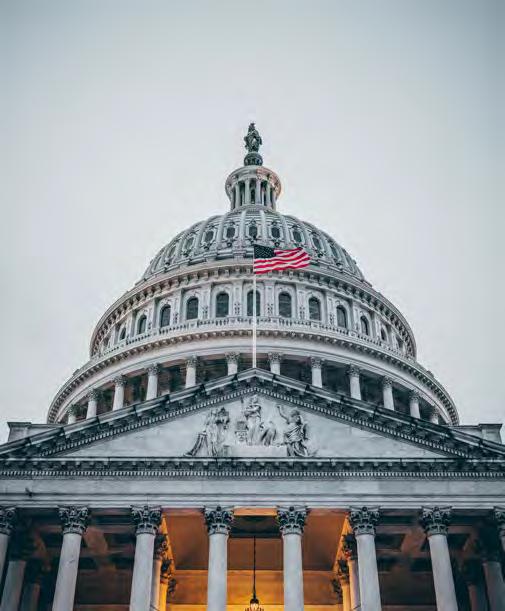
Penn IUR offers a variety of activities including an innovation program linking students to urban leaders, awards for exceptional performance in urbanism, and a credit-bearing research course.

Penn IUR’s sponsors three undergraduate programs: Fellows in Urban Leadership Program, the Undergraduate Urban Research Colloquium (UURC), and the Lawrence C. Nussdorf Student Award.

The Penn IUR Fellows in Urban Leadership program provides a competitively selected cohort of outstanding Penn undergraduates with the opportunity to engage with and learn from high-level local and regional urban leaders drawn from government, business, and civil society. In 2022–23, 16 Fellows met in small, off-the-record conversations with leaders from a range of sectors, including: Craig Carnaroli, Penn Executive Vice President; Anne Fadullon, Director, Department of Planning and Development, City of Philadelphia; Greg Heller, Director, Guidehouse; Diana Lu, Director, Knight-Lenfest Local News Transformation Fund; and Michael Nutter, Former Mayor, City of Philadelphia.
The Fellows also visited Washington, D.C. and New York City where they met with local leaders. In New York, they met with: Patrick Brett, Managing Director, Citigroup; David Gallo, Founder and Managing Member, Valinor Management; Lorraine Grillo, First Deputy Mayor, City of New York; William Lukashok, Director, Prana Investments; Mark Rosenberg, Principal and Chief Operating Officer, MHR Fund Management.
In Washington, D.C., they met with Chandan Deuskar, Urban Development Specialist, The World Bank; Samuel Geldin, Postdoctoral Researcher, Penn IUR; Bryan Griffith, Director of Member Services and Engagement, National League of Cities; John-Michael LaSalle,
Senior Analyst, Climate Policy Initiative; Tracy Hadden Loh, Fellow, Anne T. and Robert M. Bass Center for Transformative Placemaking, The Brookings Institution; Madeleine Marr, Legislative Assistant, Sen. John Fetterman (D-PA); Melanie Nussdorf, Partner, Steptoe & Johnson; David Park, Director, Data & Business Analytics, National League of Cities; Lawrence Parks, Co-Founder, Forethought Advisors; Tony Pipa, Senior Fellow, The Center for Sustainable Development, The Brookings Institution; Daniel Ricchetti, Deputy Special Representative for City and State Diplomacy, U.S. Department of State; Mark Rosenberg, Principal, MHR Fund Management; Michael Samuelian, Founder, Cornell Tech Urban Tech Hub; and Archana Sridhar, Program Manager, Grassroots Advocacy, National League of Cities.
The 2022–23 Fellows in Urban Leadership are:
۳ Christin Clyburn , The Wharton School, (Major: Economics; Minor: Sustainability and Environmental Management)
۳ David Garnick , School of Arts & Sciences (Major: Urban Studies and Political Science)
۳ Adam Goudjil , School of Arts & Sciences (Major: Urban Studies; Minor: Urban Education Policy)
۳ Emily Huynh , School of Arts & Sciences (Major: Health and Societies; Minor: Bioethics)
۳ Joey Jung , School of Arts & Sciences (Major: Urban Studies and Political Science; Minor: Public Policy and Data Analytics)
۳ Tessa Kong , School of Arts & Sciences (Major: Visual Studies; Minor: Architecture)
۳ Elijah Levine, The Wharton School of Business (Major: Economics)
۳ Rain Liu , School of Arts & Sciences (Major: Economics and Political Science; Minor: Statistics)
۳ Tani Madichetti , The Wharton School (Major: Business Economics and Public Policy (BEPP); Minor, Urban Studies)

۳ Katrina Murray, School of Arts & Sciences, (Major: Health and Societies; Minor: Earth Sciences)
۳ Connor Nakamura , School of Arts & Sciences (Major: Urban Studies)
۳ Thrusha Puttaraju , School of Arts & Sciences (Major: Neuroscience; Minor, Healthcare Management)
۳ Jonah Schenk , The Wharton School (Major: Finance and Real Estate)
۳ Justine Seo, School of Arts & Sciences (Major: Philosophy, Politics, and Economics)
۳ Victoria Sousa , School of Arts & Sciences (Major: Philosophy, Politics, and Economics)
۳ Jack Starobin , School of Arts & Sciences (Major: Political Science and Economics; Minor: Hispanic Studies)
Penn IUR recognized three students with the 2023 Penn IUR Lawrence C. Nussdorf Student Award. The award, named in honor of the late Lawrence C. Nussdorf, an early champion of Penn IUR and a founding Board member, recognizes exemplary students who have demonstrated their deep interest in urban issues through involvement in the Fellows in Urban Leadership (FUL) program or the Undergraduate Urban Research Colloquium (UURC). They are:
۳ Luke Campo (C’24), a Penn IUR Fellow in Urban Leadership, 2022–23, and student in the Undergraduate Urban Research Colloquium is majoring in International Relations and minoring in Environmental Studies.
۳ Adam Goudjil (C’23) a Penn IUR Fellow in Urban Leadership, 2021–23, and a student in the Undergraduate Urban Research Colloquium majored in Urban Studies and minored in Urban Education Policy.

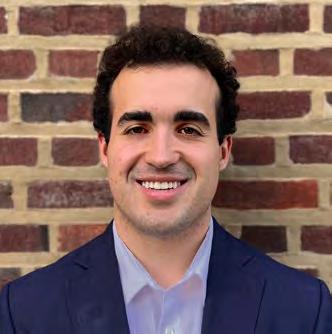
۳ Victoria “Tori” Sousa (C’23) a Penn IUR Fellow in Urban Leadership, 2022–23, and student in the Undergraduate Urban Research Colloquium majored in Politics, Philosophy, and Economics, with a concentration in Public Policy and Governance.

▶ The Lawrence C. Nussdorf Student Award recognizes
▶ exemplary students who have demonstrated their
▶ deep interest in urban issues through involvement
▶ in the Fellows in Urban Leadership program or ▶ the Undergraduate Urban Research Colloquium.
Penn IUR has sponsored CPLN 528/URBS 428 Undergraduate Urban Research Colloquium (UURC) for 19 years as an advanced research seminar for undergraduates to work with faculty or doctoral candidate mentors on an urban-focused project requiring basic research. The teams come from departments throughout the university, with students receiving credits either through the Weitzman School of Design’s Department of City & Regional Planning or the School of Arts & Sciences’ Urban Studies Program.
In 2022–23 cohort included the following students and projects:

۳ Amy Zhang , Economics, The Wharton School
ANALYZING THE INTERACTIVE EFFECT OF RACE AND NEIGHBORHOOD ATTRIBUTES IN PREDICTING TRAFFIC STOP OUTCOMES USING ARTIFICIAL INTELLIGENCE
Shengxiao (Alex) Li , Mentor, PhD ’22, Postdoctoral Researcher, School of Public Policy, University of California
۳ Khue Tran, Earth Science and Environmental Studies
ASIAN AMERICAN PARTICIPATION IN CLIMATE ADAPTATION PLANNING; A CASE STUDY OF NEW YORK CITY’S HEAT ADAPTATION STRATEGIES
Chaeri Kim , Mentor, PhD ’22, Postdoctoral Researcher, Simon Fraser University
۳ Shevell Higgs , Political Science, College of Arts & Sciences
CHANGING LEGISLATIVE RACIAL LANDSCAPE IN WISCONSIN: MEASURING SHIFTS IN LEGISLATIVE ATTENTION TO RACE
Amber Mackey, Mentor, PhD Candidate, Political Science, School of Arts & Sciences
۳ Luke Campo, International Relations & Environmental Studies, College of Arts & Sciences
EXPLORING HOW THE GALÁPAGOS ISLANDS CAN PROMOTE SUSTAINABILITY AND BUILD RESILIENCE IN RESPONSE TO RISING TOURISM
Eugénie Birch , Mentor, Nussdorf Professor of Urban Research, Weitzman School of Design
۳ Yeeun Yoo, Urban Studies, College of Arts & Sciences
MUTUAL AID IN NEW YORK CITY: STUDENT-LED AID AND EFFORTS
Mary Rocco, Mentor, PhD ’16, Penn IUR Scholar, Director of Engaged Scholarship, Community Engagement and Inclusion, Barnard College
۳ Victoria Sousa , Philosophy, Politics, and Economics
RACIAL POLICY AND AGENDA INSTABILITY:
MEASURING SHIFTS IN LEGISLATIVE ATTENTION TO RACE IN MICHIGAN’S STATE LEGISLATURE
Amber Mackey, Mentor, PhD Candidate, Political Science, School of Arts & Sciences
۳ Talyah Pierce, College of Arts & Sciences
WALKABILITY IN NORTHEAST PHILADELPHIA: INVESTIGATING HOW WALKABILITY INFLUENCES TRANSPORTATION HABITS OF RESIDENTS
Jay Arzu , Mentor, PhD Candidate, City & Regional Planning, Weitzman School of Design
Penn’s Master of Urban Spatial Analytics (MUSA) is a one-year graduate program that teaches students how to use spatial analysis and data science to address the most pressing urban public policy and city planning issues of today. Penn IUR contributes to the MUSA program through convening its Advisory Board and hosting events that connect students to experts who are applying these methods to a variety of real-world problems.
▶ Penn’s Master of Urban Spatial Analytics is a one-

▶ year graduate program that teaches students
▶ how to use spatial analysis and data science to ▶ address the most pressing urban public policy ▶ and city planning issues of today.
The Urban Doctoral Symposium, co-sponsored with the Penn Urban Studies Program, celebrates graduating urban-focused doctoral students with a year-end convening where they present their findings, make connections with other urban scholars across disciplines. They also publish synopses of their research in a special annual issue of Penn IUR’s Urban Link, NEW IDEAS IN URBAN RESEARCH .
The following students presented their work at the Symposium:


۳ David Mitre Becerril
THE EFFECTS OF NEIGHBORHOOD INVESTMENTS ON PUBLIC SAFETY Criminology, School of Arts & Sciences
Aaron J. Chalfin, Advisor Associate Professor of Criminology, School of Arts & Sciences
۳ Christine Quattro
EVIDENCE OF DISPARATE IMPACT IN EXISTING ZONING STRUCTURES City & Regional Planning, Weitzman School of Design
Thomas Daniels, Advisor Crossways Professor, Department of City & Regional Planning, Weitzman School of Design
۳ Xuequan Elsie Peng
THE DYNAMICS OF URBAN DEVELOPMENT: EVIDENCE FROM LAND USE REFORM IN NEW YORK Economics, School of Arts & Sciences
Gilles Duranton, Advisor
Dean’s Chair in Real Estate Professor, The Wharton School
Holger Sieg, Advisor Professor of Economics, School of Arts & Sciences
۳ Boqian Xu
TRANSFORMING CHINA’S NATIONAL NEW AREAS TOWARDS ECOLOGICAL CIVILIZATION City & Regional Planning, Weitzman School of Design
Zhongjie Lin, Advisor
Associate Professor, Department of City & Regional Planning, Weitzman School of Design

Penn IUR honors the many experts who collaborate with Penn IUR on research and programming through six honorific categories: Faculty Fellows, Scholars, Emerging Scholars, Fellows, Visiting Scholars, and Affiliated Doctoral Students. Through these networks, Penn IUR aims to foster an environment that encourages cross-disciplinary connections and nurtures a collaborative spirit across the University and beyond.



Penn IUR’s academic and professional networks promote exploration of urban issues across disciplines and sectors while its advisory boards help shape its programs and initiatives.
Penn faculty with a demonstrated interest in cities.
Francesca Russello Ammon
Associate Professor, Departments of City & Regional Planning and Historic Preservation, Weitzman School of Design
David Barnes
Associate Professor, History and Sociology of Science, School of Arts & Sciences
Jere Behrman
William R. Keenan, Jr. Professor of Economics, School of Arts & Sciences
Eugénie Birch
Lawrence C. Nussdorf Professor of Urban Research and Education, Department of City & Regional Planning, Weitzman School of Design
Matthijs Bouw
Professor of Practice and McHarg Center Fellow for Risk and Resilience, Department of Landscape Architecture, Weitzman School of Design
William Burke-White
Professor of Law, Penn Carey Law School
Carolyn Cannuscio
Associate Professor of Family Medicine and Community Health, Perelman School of Medicine
Camille Zubrinsky Charles
Walter H. and Leonore C. Annenberg Professor in the Social Sciences; Professor of Sociology, Africana Studies and Education, School of Arts & Sciences
Ram Cnaan
Professor, School of Social Policy & Practice
Dennis Culhane
Dana and Andrew Stone Chair in Social Policy, School of Social Policy & Practice
Thomas Daniels
Crossways Professor, Department of City & Regional Planning, Weitzman School of Design
John DiIulio, Jr.
Frederic Fox Leadership Professor of Politics, Religion, and Civil Society, School of Arts & Sciences
Gilles Duranton
Dean’s Chair in Real Estate Professor, The Wharton School
Fernando Ferreira
C.F. Koo Professor, Professor of Real Estate, Professor of Business Economics and Public Policy, The Wharton School
Lance Freeman
James W. Effron University Professor, Penn Integrates Knowledge (PIK) Professor of City & Regional Planning, Weitzman School of Design, and Sociology, School of Arts & Sciences
Vivian Gadsden
William T. Carter Professor of Child Development and Education, Graduate School of Education
Karen Glanz
George A. Weiss University Professor, Biostatistics and Epidemiology, Professor of Nursing, School of Nursing
Andrea Goulet Professor of French and Francophone Studies, School of Arts & Sciences
David Gouverneur
Associate Professor of Practice, Department of City & Regional Planning, Weitzman School of Design
David Grazian
Professor of Sociology and Communication, School of Arts & Sciences
Pam Grossman
Dean Emeritus and Professor of Education, Graduate School of Education
Erick Guerra
Associate Professor, Department of City & Regional Planning, Weitzman School of Design
Joseph Gyourko
Martin Bucksbaum Professor, Professor of Real Estate, Professor of Finance, Professor of Business Economics and Public Policy
Kathleen Hall
Associate Professor of Education and Anthropology, Graduate School of Education
Jessie Handbury
Associate Professor of Real Estate, The Wharton School
Ira Harkavy
Associate Vice President and Founding Director, Netter Center for Community Partnerships; Barbara and Edward Netter Center for Community Partnerships
Amy Hillier
Associate Professor, School of Social Policy & Practice
Mark Alan Hughes
Professor of Practice, Department of Landscape Architecture, Weitzman School of Design
John Jackson, Jr.
Provost and Richard Perry University Professor, Annenberg School of Communication
Shane Jensen
Professor of Statistics and Data Science, The Wharton School
David Young Kim
Associate Professor, History of Art, School of Arts & Sciences
Eliza Whiteman Kinsey
Assistant Professor, Family Medicine and Community Health, Perelman School of Medicine
Vijay Kumar Nemirovsky Family Dean of Penn Engineering, School of Engineering and Applied Sciences
Allison Lassiter Assistant Professor, Department of City & Regional Planning, Weitzman School of Design
Jennifer Ponce de Leon Associate Professor, English, School of Arts & Sciences
Zhongjie Lin
Associate Professor, Department of City & Regional Planning, Weitzman School of Design
Ken Lum Marilyn Jordan Taylor Presidential Professor, Department of Fine Arts, Weitzman School of Design
John MacDonald
Professor of Criminology and Sociology, School of Arts & Sciences
Iourii Manovskii
Professor of Economics, School of Arts & Sciences
Christopher Marcinkoski
Associate Professor, Department of Landscape Architecture, Weitzman School of Design
Jennifer Pinto Martin
Viola MacInnes/Independence Professor of Nursing, School of Nursing
Randall Mason
Professor, Departments of Historic Preservation and City & Regional Planning, Weitzman School of Design
Matthew McHugh
The Independence Chair for Nursing Education; Professor of Nursing, School of Nursing
Howard Neukrug
Professor of Practice, Earth and Environmental Science, School of Arts & Sciences
Laura Perna Vice Provost for Faculty; GSE Centennial Presidential Professor of Education, Graduate School of Education
Wendell Pritchett
James S. Riepe Presidential Professor of Law and Education, Penn Carey Law School
Daniel Raff
Associate Professor, Management, The Wharton School
Vincent Reina
Associate Professor, Department of City & Regional Planning, Weitzman School of Design
Simon Richter Class of 1942 Endowed Term Professor of German, School of Arts & Sciences
Akira Drake Rodriguez
Assistant Professor, Department of City & Regional Planning, Weitzman School of Design
Harvey Rubin
Professor of Medicine, Perelman School of Medicine
Megan Ryerson
UPS Chair of Transportation, Department of City & Regional Planning, Weitzman School of Design
Saswati Sarkar
Professor, Electrical and Systems Engineering, School of Engineering and Applied Science
Lisa Servon Kevin and Erica Penn Presidential Professor, Department of City & Regional Planning, Weitzman School of Design
Heather Sharkey Professor, Near Eastern Languages & Civilizations, School of Arts & Sciences
Todd Sinai David B. Ford Professor; Professor of Real Estate and Business Economics and Public Policy, The Wharton School
David Arthur Skeel
S. Samuel Arsht Professor of Corporate Law, Penn Carey Law School
Eugenia C. South
Assistant Professor of Emergency Medicine, Perelman School of Medicine
Frederick Steiner
Dean and Paley Professor, Weitzman School of Design
Nancy Steinhardt
Professor of East Asian Art, East Asian Languages and Civilizations, School of Arts & Sciences
Mark Stern
Professor of Social Policy and History, School of Social Policy & Practice
Marilyn Jordan Taylor
Professor of Architecture and Urban Design, Departments of Architecture and City & Regional Planning, Weitzman School of Design
Domenic Vitiello
Associate Professor, Department of City & Regional Planning, Weitzman School of Design
Susan Wachter
Albert Sussman Professor of Real Estate and Professor of Finance, The Wharton School
Richard Weller
Professor, Department of Landscape Architecture, Weitzman School of Design
Renowned academics from around the world investigating critical urban problems.
Arthur Acolin
Associate Professor and Bob Filley
Endowed Chair, Runstad Department of Real Estate, College of Built Environments at the University of Washington
Elijah Anderson
Sterling Professor of Sociology and of African American Studies, Yale University
Sai Balakrishnan
Associate Professor, Department of City & Regional Planning, University of California, Berkeley
Timothy Beatley
Teresa Heinz Professor of Sustainable Communities, University of Virginia
Qin Bo
Professor and Chair, Department of Urban Planning and Management, Renmin University of China
Nisha Botchwey
Dean, Hubert H. Humphrey School of Public Affairs, University of Minnesota
Catherine Brinkley
Associate Professor, Department of Human Ecology, University of California, Davis
Daniel Campo
Chair, Graduate Built Environment Studies; Associate Professor, Graduate Program in City & Regional Planning, Morgan State University
Carolyn Chernoff
Graduate Faculty, Moore College of Art and Design
Raj Chetty
William A. Ackman Professor of Public Economics, Harvard University
Benjamin Chrisinger
Associate Professor of Evidence-Based Policy Evaluation, Department of Social Policy and Intervention, University of Oxford
Daniel Aldana Cohen
Director, Socio–Spatial Climate Collaborative; Assistant Professor of Sociology, University of California, Berkeley
Janet Currie
Henry Putnam Professor of Economics and Public Affairs, Princeton University
Anthony DeFusco
Associate Professor, Department of Finance, Kellogg School of Management, Northwestern University
Stefanie DeLuca
James Coleman Professor of Social Policy and Sociology, Johns Hopkins University
Yongheng Deng Professor, Real Estate and Urban Land Economics, University of Wisconsin–Madison
Rebecca Diamond
Class of 1988 Professor of Economics, Graduate School of Business, Stanford University
Zaire Dinzey-Flores
Associate Professor and Department Chair, Latino and Hispanic Caribbean Studies and Sociology, Rutgers University
Meagan Ehlenz
Associate Professor, School of Geography and Urban Planning, Arizona State University
Theodore Eisenman
Associate Professor, Landscape Architecture, University of Massachusetts, Amherst
Richard Florida University Professor, Rotman School of Management, University of Toronto
Matthew Freedman
Professor, Department of Economics, University of California, Irvine
Edward Glaeser
Department Chair, Fred and Eleanor Glimp Professor of Economics, Harvard University
Richard Green
Professor; Director and Chair, USC Lusk Center for Real Estate; Chair, Wilbur H. Smith III Department of Real Estate Development, University of Southern California
Paul Jargowsky
Professor of Public Policy, Rutgers University
Rucker Johnson
Chancellor’s Professor of Public Policy, University of California Berkeley
Mark Joseph
Leona Bevis and Marguerite
Haynam Associate Professor of Community Development, Case Western Reserve University
Matthew Kahn
Provost Professor of Economics and Spatial Sciences, University of South California, Dornsife
Devesh Kapur
Starr Foundation Professor of South Asian Studies, Johns Hopkins University
Kyung-Hwan Kim
Emeritus Professor of Economics, Sogang University; Former Vice Minister, Ministry of Land, Infrastructure and Transport (MOLIT)
Kirsten Kinzer
Associate Professor, Department of Public and International Affairs, University of North Carolina Wilmington
Scott Gabriel Knowles
Professor, Korea Advanced Institute of Science and Technology
Christian Krohn-Hansen
Professor, Department of Social Anthropology, University of Oslo
James Kwame Mensah Senior Lecturer, University of Ghana
Dowell Myers
Professor, Sol Price School of Public Policy; Director, Population Dynamics Research Group, University of Southern California
Suzana Pasternak
Professor of Architecture and Urbanism, University of São Paulo
Andrey Pavlov
Professor of Finance, Beedie School of Business, Simon Fraser University
Rolf Pendall
Professor and Head of Urban and Regional Planning, University of Illinois
Marina Peterson
Professor, University of Texas at Austin
Steven Raphael
Professor and James D. Marver Chair in Public Policy, Goldman School of Public Policy, University of California Berkeley
Mary Rocco
Director of Engaged Scholarship, Community Engagement and Inclusion, Barnard College–Columbia University
Stephen L. Ross
Professor of Economics, University of Connecticut
Jesse Rothstein
Professor of Public Policy and Economics, University of California Berkeley
Brent Ryan
Associate Provost and Professor of Urban Design and Public Policy, Massachusetts Institute of Technology
Bish Sanyal
Ford International Professor of Urban Development and Planning, Massachusetts Institute of Technology
Saskia Sassen
Robert S. Lynd Professor of Sociology, Columbia University
Harris Steinberg
Executive Director, Lindy Institute for Urban Innovation, Drexel University
Matthew Steinberg
Associate Professor of Education Policy, George Mason University
Vinod Tewari
Professor, Department of Policy Studies, TERI University, New Delhi
Catherine Tumber
Visiting Scholar, School of Public Policy and Urban Affairs, Northeastern University
Lawrence Vale Ford Professor of Urban Design and Planning, Massachusetts Institute of Technology
Mark Willis
Senior Policy Fellow, Furman Center for Real Estate and Urban Policy, New York University
Kathleen Wolf
Research Social Scientist, College of the Environment, School of Environmental and Forest Sciences, University of Washington
Laura Wolf-Powers
Associate Professor, Urban Planning and Policy, Hunter College
Chunxia Yang
Associate Professor, Department of Architecture, Tongji University
Anthony Yeh
Chair and Professor, Department of Urban Planning and Design, University of Hong Kong; Director, Geographic Information Systems Research Centre; Deputy Convener of the Contemporary China Studies Strategic Research Area
researchers at various institutions conducting urban-focused scholarship.
Cameron Anglum
Assistant Professor, Education Policy and Equity, Saint Louis University
Peter Blair
Assistant Professor of Education, Harvard University
Elizabeth Bynum
Project Researcher, Beeck Center for Social Impact and Innovation, Georgetown University
Caroline Cheong
Assistant Professor, History, University of Central Florida
Lee Ann Custer
NEH Collaborative Humanities
Postdoctoral Fellow, Vanderbilt College of Arts and Science
Xiaoxia Dong
Research Associate and Lecturer, Department of City & Regional Planning, Weitzman School of Design, University of Pennsylvania
Billy Fleming Wilks Family Director, Ian L. McHarg Center, Weitzman School of Design, University of Pennsylvania
Albert Han
Assistant Professor, Urban Planning, Korea Advanced Institute of Science and Technology
Matthew Kenyatta
Director of Justice and Belonging, Department of City & Regional Planning, Weitzman School of Design, University of Pennsylvania
Jae Min Lee
Assistant Professor, University of Ulsa, Korea
Shengxio (Alex) Li
Postdoctoral Researcher, School of Public Policy at University of California Riverside
Sisi Liang
Assistant Professor, Department of Urban Planning, Tsinghua University, China
Theodore Lim
Assistant Professor, Urban Affairs and Planning, Virginia Tech
Desen Lin
Assistant Professor of Finance, California State University, Fullerton
Amy Lynch
Assistant Professor, Department of Geography, Ohio University
Megan Reed
Assistant Professor, Sociology and Quantitative Theory and Methods, Emory University
Ariadna Reyes-Sanchez
Assistant Professor, College of Architecture, Planning, and Public Affairs, University of Texas at Arlington
Jennifer Whittaker
Research Associate, PolicyLab, Children’s Hospital of Philadelphia
Amber Woodburn
Assistant Professor, City & Regional Planning, Ohio State University
Vivian Wu
Assistant Professor, School of Public Policy, UMass Amherst
Albert Zevelev
Assistant Professor, Applied Economics, Zicklin School of Business, Baruch College, City University of New York
International scholars studying urban topics at Penn.
Shaoping Guan
Professor of Design and Architecture, South China University of Technology
Tingting Hong
Department Chair of Landscape Architecture, Fuzhou University
Qianyun Ji
Doctoral Candidate, Department of Urban Planning and Design, Tsinghua University
Mauricio Rodas
Visiting Scholar at Penn Institute for Urban Research, Perry World House, and Kleinman Center for Energy Policy; Former Mayor, Quito, Ecuador
Ruoxi Zhang
Associate Dean of School of Architecture and Civil Engineering, Xiamen University
Rong Zhao
Associate Professor of Urban Design, China Academy of Art
Expert practitioners and policymakers shaping the world’s cities.
Stuart Andreason
Assistant Vice President and Director, Center for Workforce and Economic Opportunity, Federal Reserve Bank of Atlanta
Tim Bartik
Senior Economist, W.E. Upjohn Institute for Employment Research
María Alicia Becdach
Practitioner Architect and Urban Planning Consultant
Angela Glover Blackwell
Founder in Residence, PolicyLink
Raphael Bostic
President and CEO, Federal Reserve Bank of Atlanta
Monica Brezzi
Head, Governance Indicators and Performance Evaluation Division, Directorate for Public Governance, OECD
Seung Ah Byun
Water Resource Engineer, Delaware River Basin Commission
Shahana Chattaraj
Director, Research Data and Innovation, WRI India, World Resources Institute
Mengke Chen
Director, Tencent
Henry Cisneros
Chairman and Co-Founder, American Triple I Partners
Joan Clos
Former Executive Director, United Nations Human Settlement Programme (UN-HABITAT)
Andrew Davidson
Founder and President, Andrew Davidson & Co. Inc.
Chandan Deuskar
Urban Development Specialist, The World Bank
Lei Ding
Community Development Research Officer, Federal Reserve Bank of Philadelphia
Derek Douglas President, Civic Committee and the Commercial Club of Chicago
Brian English
Founder and Owner, Origin Studio
Anne Fadullon Director, Department of Planning and Development, City of Philadelphia
John Paul Farmer
Chief Innovation Officer & President of WeLink Cities, WeLink
Richard Freeland
Senior Consultant, Freeland/Maguire Strategic Leadership Services
David Gest
Partner, Ballard Spahr
William Glasgall
Senior Vice President and Director, State and Local Initiatives, Volcker Alliance
Ira Goldstein President, Policy Solutions, Reinvestment Fund
Laurie Goodman
Institute Fellow, Housing Finance Policy Center, The Urban Institute
Alan Greenberger
Vice President of Real Estate and Facilities, Drexel University
Andrew Haughwout
Director of Household and Public Policy Research, Federal Reserve Bank of New York
Abha Joshi-Ghani
Senior Adviser for Public Private Partnerships, Infrastructure Analytics, and Guarantees, The World Bank
Elizabeth Kneebone
Research Director, Terner Center for Housing Innovation, University of California, Berkeley
Carolyn Kousky
Associate Vice President for Economics and Policy, Environmental Defense Fund
Paul Levy
President and CEO, Center City District
Rose Molokoane
Deputy President, Shack/Slum Dwellers International (SDI)
Simon Mosbah Business Line Director, Infrastructure Funding and Grants, WSP USA
Anne Bovaird Nevins
Director of Economic Development, Accelerator for America
Michael Nutter
Former Mayor of Philadelphia; David N. Dinkins Professor of Professional Practice in Urban and Public Affairs, Columbia University
Sheela Patel
Founder and Director, Society for Promotion of Area Resource Centres, SPARC
Enrique Peñalosa
President and Board of Directors, Institute for Transportation and Development Policy (ITDP)
Janice Perlman
Senior Research Scholar, Columbia University
Martino Pesaresi
Senior Scientific Officer, Global Security and Crisis Management Unit, Joint Research Centre, Institute for the Protection and Security of the Citizen (IPSC)
Richard Ravitch
Director, Volcker Alliance; Former Lieutenant Governor, New York
Michael Replogle
Founder, Institute for Transportation & Development Policy; Former Deputy Commissioner for Policy, New York City Department of Transportation
Aromar Revi
Director, India Institute for Human Settlements (IHHS)
Claire Robertson-Kraft
Founder and Director, ImpactED
Tony Sorrentino
Associate Vice President, Office of the Executive Vice President, University of Pennsylvania
David Stanek
Director, Econsult Solutions
Joseph Su
Chief, Department of National Spatial Planning and Development, Taiwan National Development Council
David Thornburgh
President and CEO, Committee of Seventy
Margery Austin Turner Institute Fellow, Urban Institute
Richard Voith
Founding Principal, Econsult Solutions
Sameh Naguib Wahba
Global Director, Urban, Disaster Risk Management, Resilience and Land Global Practice, World Bank
Sarah Rosen Wartell
President, Urban Institute
Mark Zandi
Chief Economist, Moody’s Analytics
Doctoral candidates and postdoctoral fellows from across Penn’s campus investigating urban issues.
Jane Abell
Anthropology, School of Arts & Sciences
Heidi Artigue Applied Economics, The Wharton School
Jay Arzu City & Regional Planning, Weitzman School of Design
Adawaita Banerjee
Anthropology, School of Arts & Sciences
Tayeba Batool
Anthropology, School of Arts & Sciences
David Mitre Becerril
Criminology, School of Arts & Sciences
Kathy Bi
Applied Economics, The Wharton School
Irteza Binte-Farid
Postdoc at the Annenberg School of Communication
Rachel Bondra
City & Regional Planning, Weitzman School of Design
Alisa Chiles
History of Art, School of Arts & Sciences
Bing-yu Chiu City & Regional Planning, Weitzman School of Design
Joshua Davidson City & Regional Planning, Weitzman School of Design
Stephanie Fenniri City & Regional Planning, Weitzman School of Design
Spencer Folk Mechanical Engineering, School of Engineering
Samuel Geldin Postdoctoral Fellow for Penn IUR
Stephanie Gibson
History of Art, School of Arts & Sciences
Ryan Gross Statistics and Data Science, The Wharton School
Wilson Hernandez Criminology, School of Arts & Sciences
Rebecca Jorgensen Applied Economics, The Wharton School
Jeanna Kenney Applied Economics, The Wharton School
Chaeri Kim City & Regional Planning, Weitzman School of Design
Austin Lee Sociology, School of Arts & Sciences
Yeonhwa Lee City & Regional Planning, Weitzman School of Design
Robert Levinthal
City & Regional Planning, Weitzman School of Design
Muira McCammon Annenberg School of Communication
Diana Negron
City & Regional Planning, Weitzman School of Design
Kimberly Noronha City & Regional Planning, Weitzman School of Design
Xuequan Elsie Peng Economics, School of Arts & Sciences
Chris Quattro
City & Regional Planning, Weitzman School of Design
Benji Smith Applied Economics, The Wharton School
Charles Starks City & Regional Planning, Weitzman School of Design
Rachael Stephens
Anthropolgy, School of Arts & Sciences
Boqian Xu
City & Regional Planning, Weitzman School of Design
Tali Ziv
Anthropology, School of Arts & Sciences
Penn IUR is advised by internationally renowned urban experts.
The Penn IUR Advisory Board is comprised of innovative practitioners in such fields as real estate, governance, arts and culture, urban planning, finance, communications, and philanthropy.
P. David Bramble Managing Partner, MCB Real Estate LLC
Patrick Brett Managing Director, Citigroup
Kevin Chavers
Chairman, Bedford Stuyvesant Restoration Corporation
Alex Chilton Managing Director, Head of Municipal Structuring, Financing and Lending, at Morgan Stanley Municipal Bond Division
Manuel Diaz Senior Partner, Lydecker Diaz, LLC
Damien Dwin CEO, Lafayette Square Holding Company, LLC
W. Paul Farmer
Former Executive Director & CEO, American Planning Association
David Gallo
Founder and Managing Partner, Valinor Management, L.P.
Renee Glover
Founder, Managing Member & CEO, The Catalyst Group, LLC
Jacques Gordon Executive-in-Residence, MIT Center for Real Estate
Doug Hagan President, Krytar
Virginia Hepner
Former CEO, Woodruff Arts Center
J. Robert Hillier Managing Principal, Studio Hillier, LLC
Rachel Kramer Vice President and Partner, The Richdale Group
William Lukashok Director, Prana Investments
Tom Millon CEO, Computershare Loan Services
Jessica Morgan Principal, Lubert-Adler Real Estate Funds
Marc H . Morial President & CEO, National Urban League
Fahd Mukhtar Director, Fatima Group
Melanie Nussdorf Senior Counsel, Steptoe & Johnson
Lawrence Parks Co-Founder, Forethought Advisors
Egbert Perry Chairman & CEO, The Integral Group, LLC
Jeffrey Poss Partner, Willkie Farr & Gallagher LLP
Richard Richman Chairman, The Richman Group, Inc.
Diane Rosen Counsel, Herrick, Feinstein LLP
Jonathan F.P. Rose President, Jonathan Rose Companies
Mark H. Rosenberg
COO and Principal, MHR Fund Management LLC
Robert J.T. Rosenfeld
President, Rosenfeld Realty Company, Inc.
Molly Rouse-Terlevich Community Volunteer and Political Fundraiser
Deborah Ratner Salzberg
Partner, Uplands Real Estate Partners
Everett Sands CEO, Lendistry
Alan D. Schnitzer CEO, The Travelers Companies, Inc.
David Shapiro
Partner, Corporate Department, Wachtell, Lipton, Rosen & Katz
Robert Stewart Managing Partner, Urban Impact Partners
Michael Tabb
Director, Corporate Real Estate | Americas, Google
Kenneth Tanenbaum
Vice Chairman, Kilmer Developments
Sameh Naguib Wahba
Regional Director for Sustainable Development, Europe and Central Asia, The World Bank
In addition to support from the University, Penn IUR is funded through a variety of external sources including grants, research contracts and partnerships, and donations. Penn IUR is grateful to all of those listed below who have provided funding support over the year.
Mr. Patrick J. Brett
Mr. Alexander B. Chilton and Ms. Laura Chilton
Crossways Foundation
Mr. W. Paul Farmer and Ms. Cornelia G. Farmer
The Federal Home Loan Mortgage Corporation
Mr. David L. Gallo
Dr. Jacques N. Gordon and Ms. Elizabeth H. Wiltshire
Mr. Thomas J. Healey
Guangzhou Institute for Urban Innovation
Ms. Rachel Slosburg Kramer
Mr. William Lukashok
The Andrew W. Mellon Foundation
Mr. Tom Robert Millon
Ms. Jessica M. Morgan and Mr. Jason A. Morgan
Melanie Franco Nussdorf, Esq.
Mr. Benjamin A. Nussdorf and Ms. Inna Dexter
Mr. Jed F. Nussdorf and Ms. Sarah Nussdorf
Mr. Lawrence H. Parks
Mr. Egbert L. J. Perry and Ms. A. Renee Perry
Jeffrey R. Poss, Esq. and Ms. Judith Brous Poss
Mr. Richard P. Richman and Ms. Ellen Schapps Richman
Mr. Jonathan F.P. Rose
Ms. Diane Rosen
Mr. Mark H. Rosenberg and Ms. Rochelle C. Rosenberg
Mr. Robert Rosenfeld and Ms. Sheri Rosenfeld
Ms. Molly Rouse-Terlevich and Mr. Fabio Terlevich
Dr. Deborah Ratner Salzberg and Mr. Michael Salzberg
Mr. Everett K. Sands
Mr. Alan David Schnitzer and Ms. Anne Berman Schnitzer
David Eric Shapiro, Esq.
Mr. Kenneth Michael Tanenbaum
The Woodrow Wilson International Center for Scholars
United Nations Environment Programme
Eugénie Birch
Lawrence C. Nussdorf Professor of Urban Research and Education
Department of City & Regional Planning
Stuart Weitzman School of Design, University of Pennsylvania
ELBIRCH@DESIGN.UPENN.EDU
Susan Wachter Albert Sussman Professor of Real Estate and Finance
The Wharton School, University of Pennsylvania WACHTER@WHARTON.UPENN.EDU
MANAGING DIRECTOR
Amy Montgomery AMYLMO@UPENN.EDU
PROGRAM COORDINATOR
Arden Jordan ARDENJ@DESIGN.UPENN.EDU
PUBLICATIONS AND COMMUNICATIONS DIRECTOR
Diana Lind DLIND@UPENN.EDU
PROGRAM DIRECTOR, GLOBAL RESEARCH INITIATIVES
Amanda Lloyd AMANDA3@UPENN.EDU


With deep sadness and heavy hearts, Penn IUR mourns the passing of Penn IUR Fellow Richard Ravitch.

Richard Ravitch was a leading attorney, entrepreneur, and public official, engaged in both private and public enterprise for more than 50 years. He began his career as a principal of the HRH Construction Corporation, where he supervised the development, financing, and construction of over 45,000 units of affordable housing in New York, Washington, D.C., Puerto Rico, and other locations. In 1975, he was appointed chairman of the New York State Urban Development Corporation (UDC) by Governor Hugh Carey. The UDC, a “moral obligation” financing and development agency with 30,000 dwelling units under construction, had become insolvent and faced the first municipal bankruptcy since the 1930s.
From 1975 to 1976, Ravitch assisted New York City and State officials in resolving the city’s defaults. In 1979, he was appointed chairman and chief executive of the Metropolitan Transportation Authority (MTA), where he recruited operating officials from the private sector with experience in marketing as well as management and operations, and developed a long-term capital plan, budget, and financing for a system-wide upgrade of operating equipment, roadbed, and signal capabilities. For his MTA work, he was awarded the American Public Transit Association’s Individual of the Year Award in 1982.
Following his MTA service, Ravitch led the effort to recapitalize The Bowery Savings Bank, once the nation’s largest mutual savings bank, arranging for its acquisition from FDIC by an investor group and serving as chairman and chief executive. Subsequently, Ravitch was retained by the owners of Major League Baseball to serve as president of the Player Relations Committee and oversee the creation of a revenue sharing plan and proposal for players.
In 1999, Ravitch was appointed co-chair of the Millennial Housing Commission to examine the federal government’s role in meeting the nation’s growing affordable housing challenges. He then served as lieutenant governor of the State of New York and was co-chair of the State Budget Crisis Task Force with former chairman of the Federal Reserve Paul A. Volcker.
For the past decade Ravitch was a strong supporter of Penn IUR, often speaking at events on public finance and writing the foreword to the Penn IUR–Penn Press book, PUBLIC PENSIONS AND CITY SOLVENCY . Ravitch was the inspiration for the launching of the Special Briefing Series in 2020 in collaboration with the Volcker Alliance, where he was a director. Ravitch spoke at several Special Briefing events, including ONE FOCUSED ON STATE AND LOCAL LEADERSHIP , and another centered on FISCAL CHALLENGES IN THE WAKE OF COVID-19 He had been scheduled to join Penn IUR at the May Expert Roundtable on municipal finance. His presence will be sorely missed, but his legacy of public citizenship and financial savvy will live on.
▶ For the past decade Ravitch was a strong supporter of Penn IUR,
▶ often speaking at events on public finance and writing the foreword
▶
